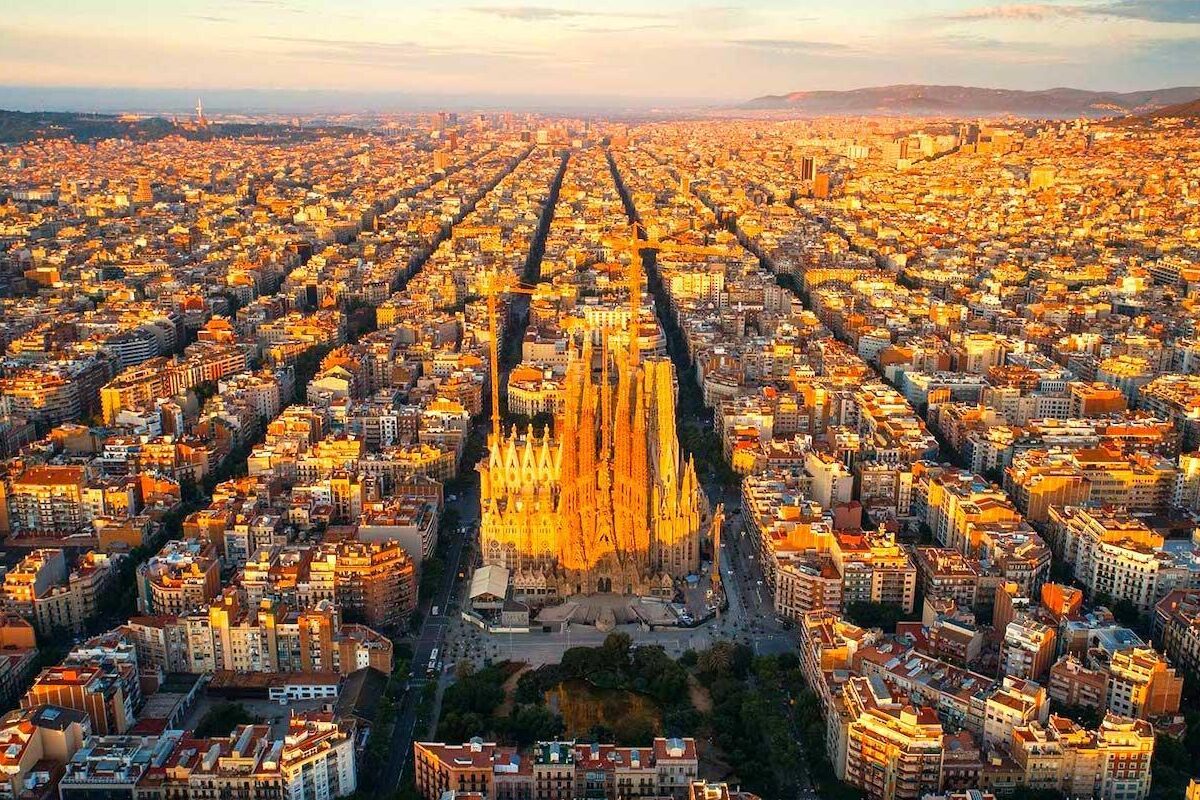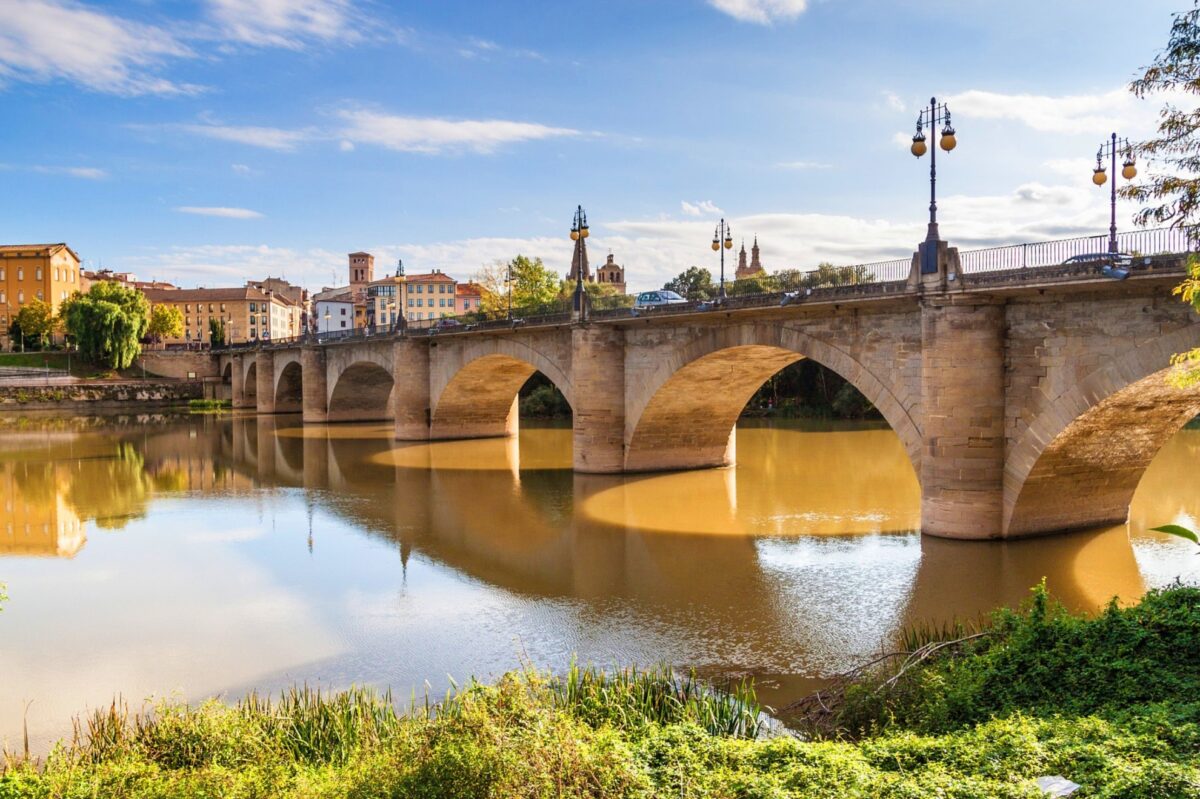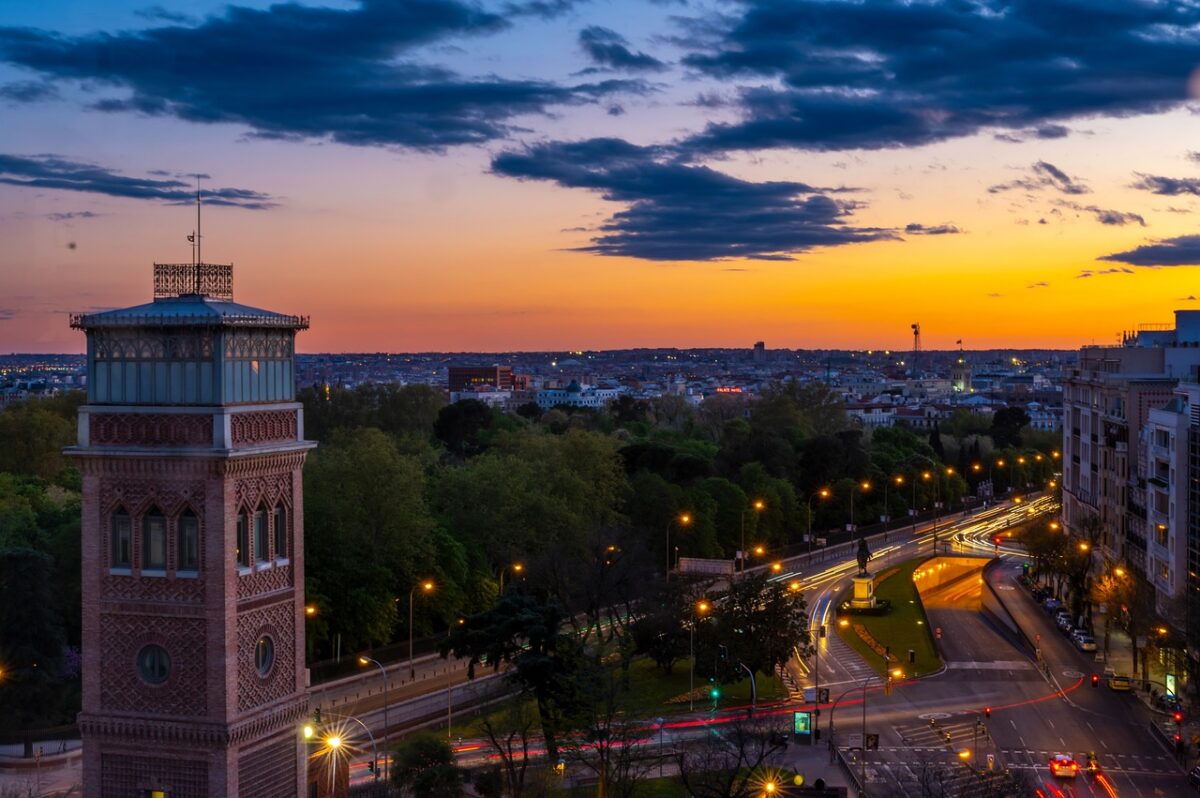A guide to Catalonia — the birthplace of Gaudi and Dali
![]()
Catalonia is an autonomous community in northeastern Spain. This is a distinctive region with its language, unique culture, and traditions. When you think of Catalonia, you first think of images of the architecture of Antoni Gaudi, the paintings of Salvador Dali, emotional football matches, and crowded beaches. What else is interesting about this Spanish region, which attracts tens of millions of tourists every year? Let’s figure it out together.
Geography of Catalonia
Catalonia is located in the northeast of the Iberian Peninsula. To the west is the region of Aragon, to the southwest is Valencia, and the eastern part of this autonomous community is washed by the Mediterranean Sea. The region’s coastline is divided into four zones — Costa del Maresme, centered on Calella, Costa Brava, Costa del Garraf, and Costa Dorada.
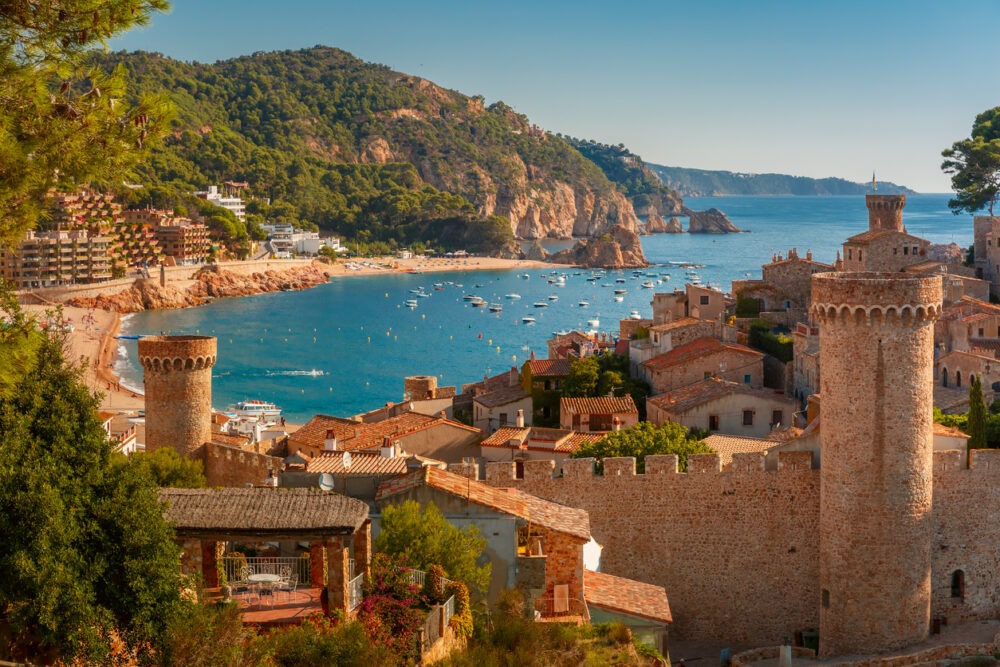
The northern border of the region is the Pyrenees Mountains, beyond which are France and Andorra. The highest point in Catalonia with an indicator of 3143 meters is Pica d’Estats. To the south of the Pyrenees is the Central Catalan Basin, centered around the Ebro River valley. To the east of it, along the sea, are the Catalan coastal ranges or, as they are also called, the Catalan Mediterranean system. Essentially, these are two parallel mountain ranges separated by a valley. The highest mountain in this territory is Montserrat, which is a rock massif 1236 meters high. There is a monastery of the same name here.
The longest river not only in Catalonia but also in Spain is the already mentioned Ebro, which flows into the Mediterranean Sea. The rivers Ter, Río Llobregat, Fluvia, and Muga also flow into it.
The largest lake in Catalonia is Estany de Banyoles. It is located near the city of the same name and covers an area of 1,575 square kilometers. Another lake, Estany de Sant Maurici, is located in the Aiguestortes i Estany de Sant Maurici National Park, the only such protected area in Catalonia. It is worth mentioning the artificial lake Estany de Puigcerdà, created in the 13th century.
The Autonomous Community of Catalonia consists of four provinces — Barcelona, Tarragona, Lleida, and Girona with the cities of the same name as administrative centers. The largest city and capital of Catalonia is Barcelona with a population of more than 3 million people.
What to see in Catalonia
The region of Catalonia is primarily associated with Gaudi architecture and medieval buildings. In addition, the local nature surprises with its diversity — the valleys turn into mountains that descend to the Mediterranean Sea.
Barcelona
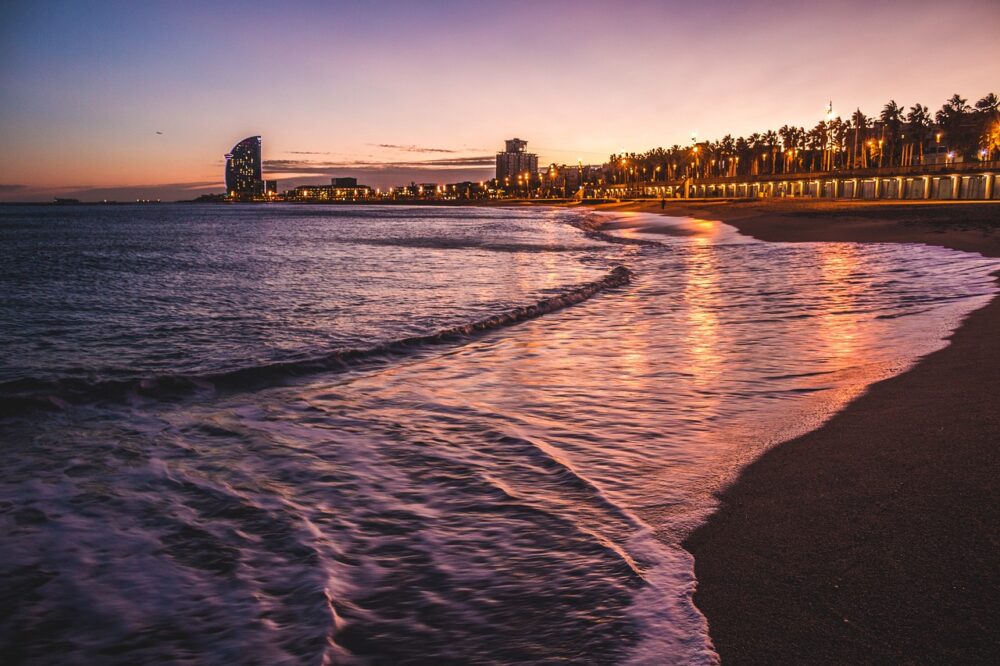
Barcelona is the most popular city in Catalonia. It is known for its incredible architecture, football club, and atmosphere of the resort, as well as its rich culture and gastronomy. The latter is evidenced by two dozen restaurants in Barcelona, marked with varying numbers of Michelin stars. The center of the city is Plaza de Cataluña (Plaça de Catalunya) with fountains and statues, where most tours in Barcelona begin. Life is especially active on the main pedestrian street, La Rambla. Along it, there are hotels, restaurants, and a variety of shops.
What are other things to see and do in Barcelona? The main attractions of the city are rightfully considered to be the architectural masterpieces of Antoni Gaudi — the Sagrada Familia, Park Guell, Casa Batllo, and Casa Mila, which stand out for their curved shapes. The second thing people come here for is attending a match of the Barcelona football team at the Spotify Camp Nou stadium. You can get acquainted with the rich past of the region at the Museum of the History of Catalonia (Museu d’Història de Catalunya). All this can be seen during organized bus tours. The excursion program is easy to combine with a lazy or active beach holiday on the Mediterranean coast.
Girona
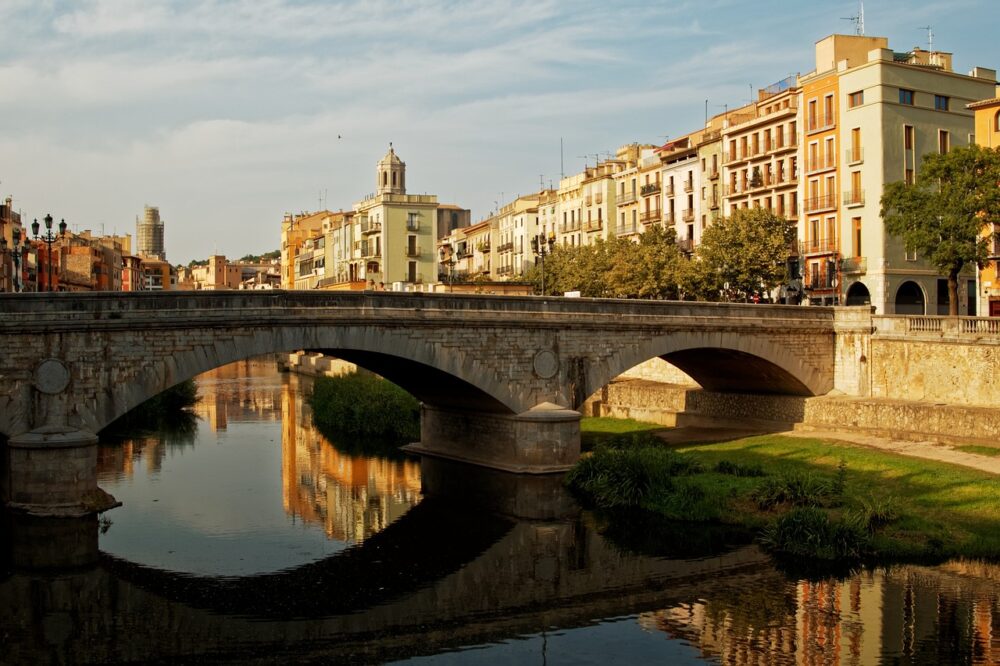
Girona is a small Catalan city in the province of the same name in Spain. It has a long history of French and Spanish rule without much destruction, so its medieval architecture is very well preserved. The city has several excellent museums, excellent restaurants, including two with Michelin stars, and picturesque bridges over the Onyar River.
What are things to do in Girona? Among the main attractions of the city and Catalonia is the Cathedral of Girona (Catedral de Santa María de Gerona). It was built in the 14th century in honor of the Virgin Mary. The cathedral was rebuilt several times, as a result of which it acquired a unique appearance. It is also worth walking through the Jewish quarter of El Kal, which dates back to the 9th century. Here you can stroll along the narrow streets, steep stairs, and beautiful courtyards. And those who climb the medieval city walls have a stunning view of the whole of Girona. To see all the important places, it is worth going on a walking tour. Near Girona in Spain is the city of Besalu, which is famous for its medieval bridge.
Tarragona
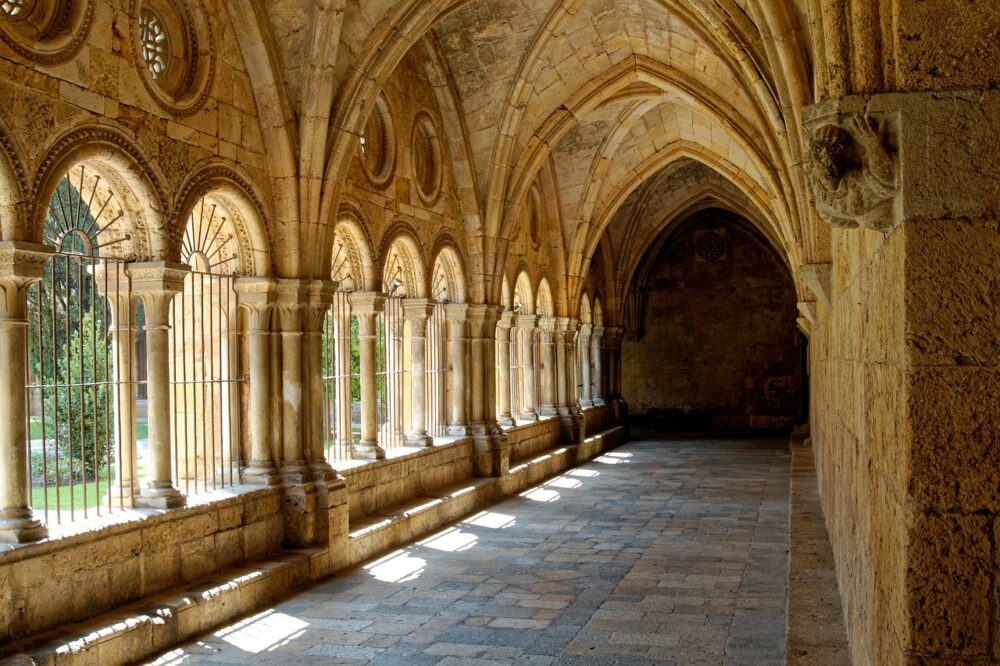
Tarragona is a small city and the administrative center of the province of Catalonia of the same name. The first Roman settlement on the Iberian Peninsula was located on its territory. It is not surprising that a large number of objects from those times of varying degrees of preservation remain here. Since 2000 they have been included in the UNESCO World Heritage List. During the Middle Ages, the city was the capital of the Kingdom of Aragon. You can get to know Tarragona’s Roman past on a walking tour.
The city is located in the resort area of the Costa Dorada, so in addition to exploring historical attractions, you can relax here on the Mediterranean coast. What are other things to do in Tarragona, Spain? Visit special locations – the Mediterranean Balcony observation deck, the Cathedral, and the Roman Amphitheater. A visit to Tarragona is a great day trip option from Barcelona.
Lleida
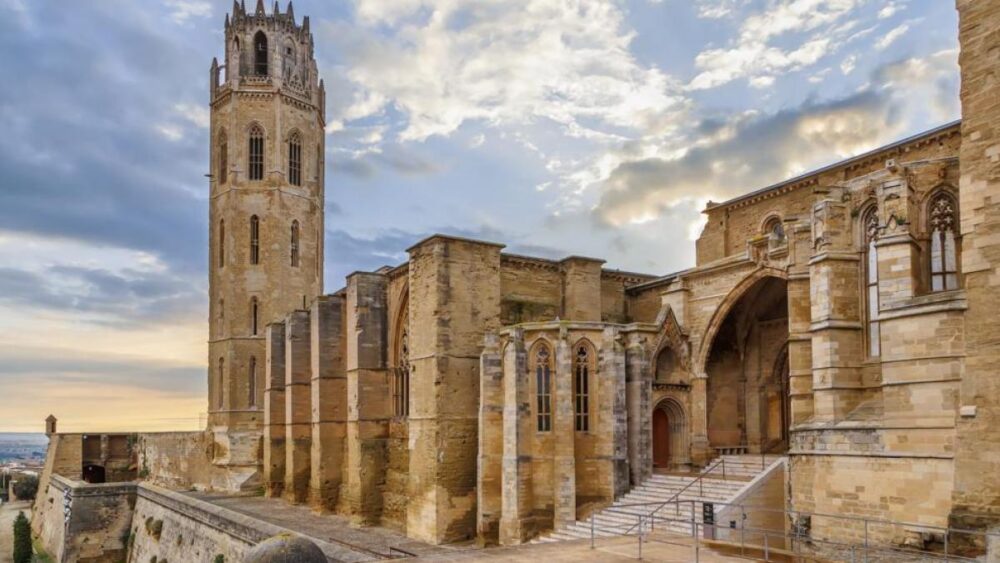
Lleida, also sometimes called Lerida, is the administrative center of the province of Catalonia of the same name. Throughout its history, Iberians, Romans, and Moors have lived here. The main attraction of Lleida is the Seu Vella de Lleida Cathedral, the construction of which began in the 13th century. It can be seen from almost anywhere in the city due to its elevated location. Another important cultural and historical site is Gardeny Castle, built by the Templars. All that remained from it was a residential tower with a donjon, part of the fortress wall, and a church.
Read also: Guide to Lerida – the city of snails
Temple of the Holy Family (Temple Expiatori de la Sagrada Familia)
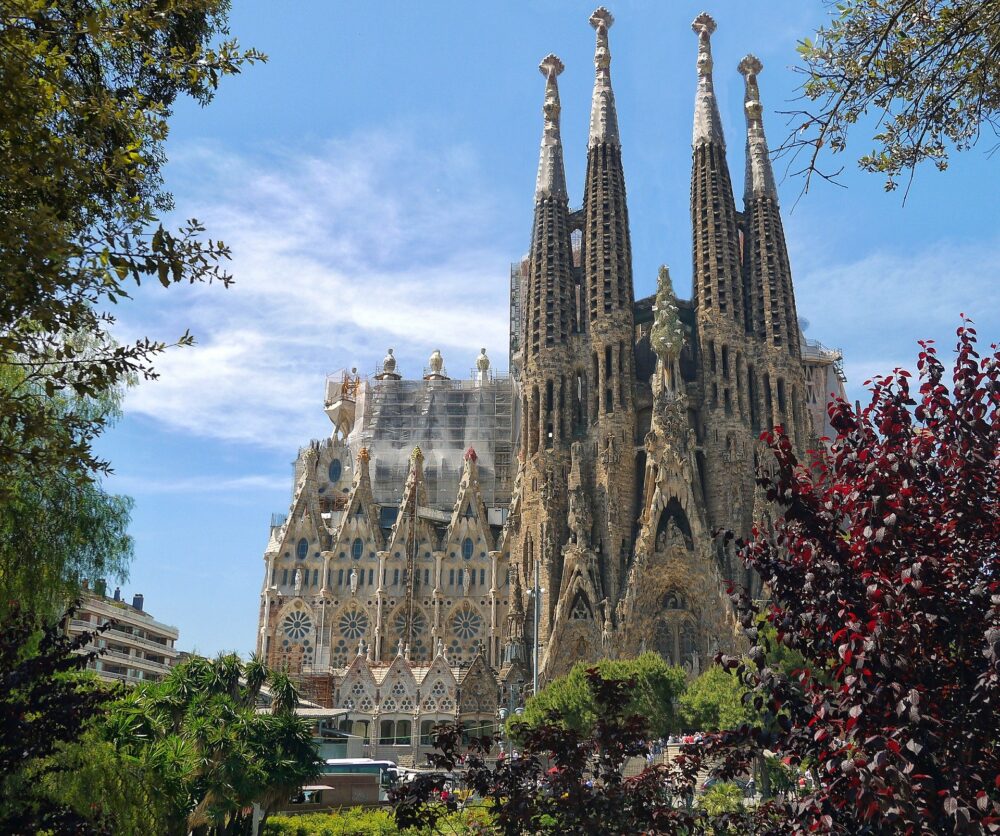
The Expiatory Temple of the Sagrada Familia is one of the most recognizable religious buildings not only in Spain but also in the world. Its construction began in Barcelona in 1883 according to the design of Antoni Gaudi. The construction was carried out exclusively through donations from parishioners, which extended this process for more than a hundred years, making the temple also the most famous unfinished building in the world. Despite construction work, it has been open for worship since 2010. In its final form, Temple Expiatori de la Sagrada Família will be a five-nave church in the shape of a Latin cross. Inside there is a crypt, seven chapels, and a cloister. The entire building should be crowned with eighteen towers dedicated to all the apostles, Jesus Christ, the Virgin Mary, as well as the evangelists Luke, Matthew, John, and Mark. As in all Gaudí’s projects, it is almost impossible to find straight lines and sharp angles here. For the full experience, it is better to visit the Sagrada Familia in Barcelona on a tour led by a professional guide to learn all the history and interesting details.
Park Güell
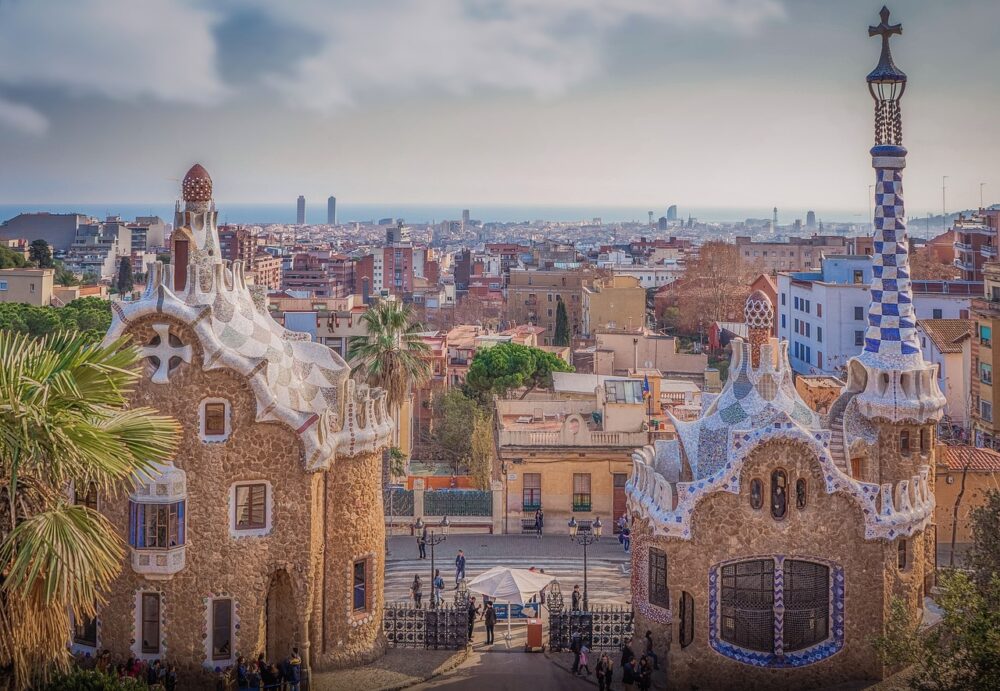
Güell is the most popular park in Barcelona and Spain, also created by Antoni Gaudi at the beginning of the 20th century. It was named after Eusebi Güell, who came up with the idea of a park with mansions for wealthy citizens. However, Barcelona residents did not want to buy houses outside the center, and as a result, out of 62, only 2 plots were purchased. In 1922, this area became a public park.
Already at the entrance, you can see how unusual this place is. Visitors are greeted by two “gingerbread houses” — one was built for the caretaker, and the second serves as an office for the park administration. Behind them begins the central staircase leading to the “Hall of a Hundred Columns.” The territory contains a network of winding alleys with stone and mosaic decorations. On the upper terrace, there is a long bench in the shape of a sea serpent. Also in Parс Güell in Barcelona, you should look at the mosaic salamander and the fountain in the form of a dragon, as well as visit the Gaudi house museum, where he lived until 1925. Part of the park is open to the public, while the other part is accessible by purchasing a ticket. To get here without queuing, you can book a tour.
Gothic Quarter of Barcelona (Barrio Gótico)
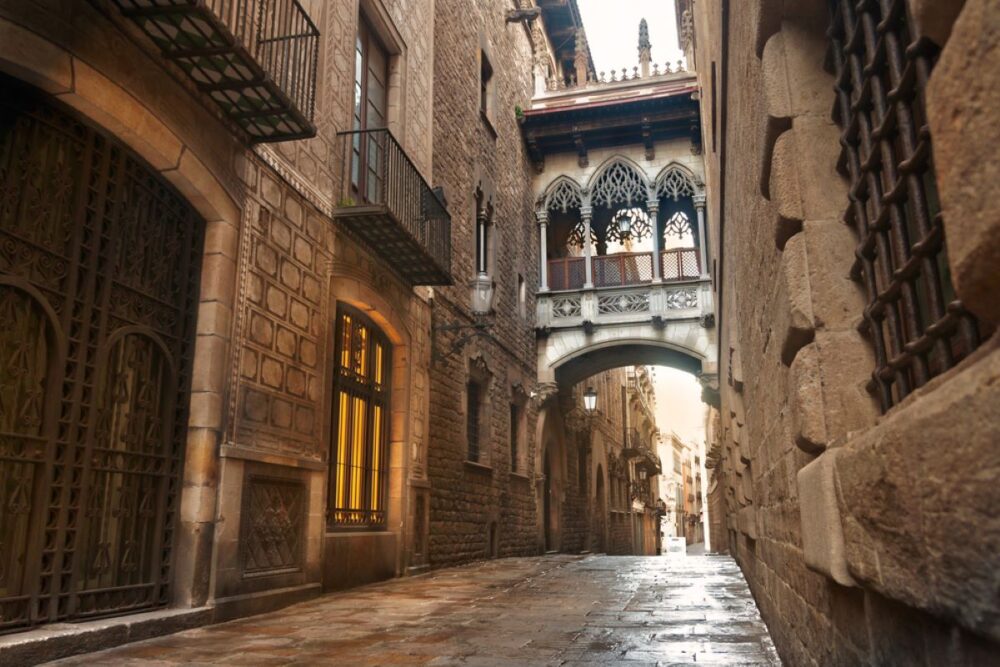
The Gothic Quarter of Barcelona, or Barri Gòtic as it is called in Catalan, is part of the Old Town. It starts from Plaza Catalunya and extends to the coast between La Ramblas and Via Laietana. What are things to do and see in the Gothic Quarter of Barcelona? Here you can get lost in the maze of narrow medieval streets, admire the majesty of the Cathedral of the Holy Cross and Saint Eulalia (La Catedral de la Santa Cruz y Santa Eulalia), find the Square of St. James (Plaza de San Jaime, Plaça de Sant Jaume) and the Royal Square (Plaza Real, Plaça Reial) and visit Can Culleretes – the oldest restaurant in Barcelona, operating since 1786.
Monastery of Montserrat (Monasterio de Montserrat)

The Benedictine monastery of Montserrat was built on the mountain of the same name outside of Barcelona. The first mention of it dates back to 880. During its existence, it was repeatedly destroyed and rebuilt. The latest major works were carried out in the middle of the 19th century. The Monasterio de Montserrat houses one of the most important shrines of Catalonia — the Black Virgin of Montserrat. This is a 12th century statue depicting the Virgin and Child. It got its name from the dark color of the wood from which it is made. Also on the territory of the monastery, there is a library and a museum where you can see works by El Greco, Caravaggio, Monet, Degas, Picasso, and Dali. Escolania de Montserrat, one of the oldest children’s choirs in the world, based here, deserves special mention.
Cable and cog railways lead to the monastery. One of the popular walking routes to it starts in the province of Barcelona from the cathedral in the municipality of Sant Cugat del Vallès. There are excellent tours from Barcelona to the monastery.
Montjuic Cable Car (Telefèric de Montjuïc)
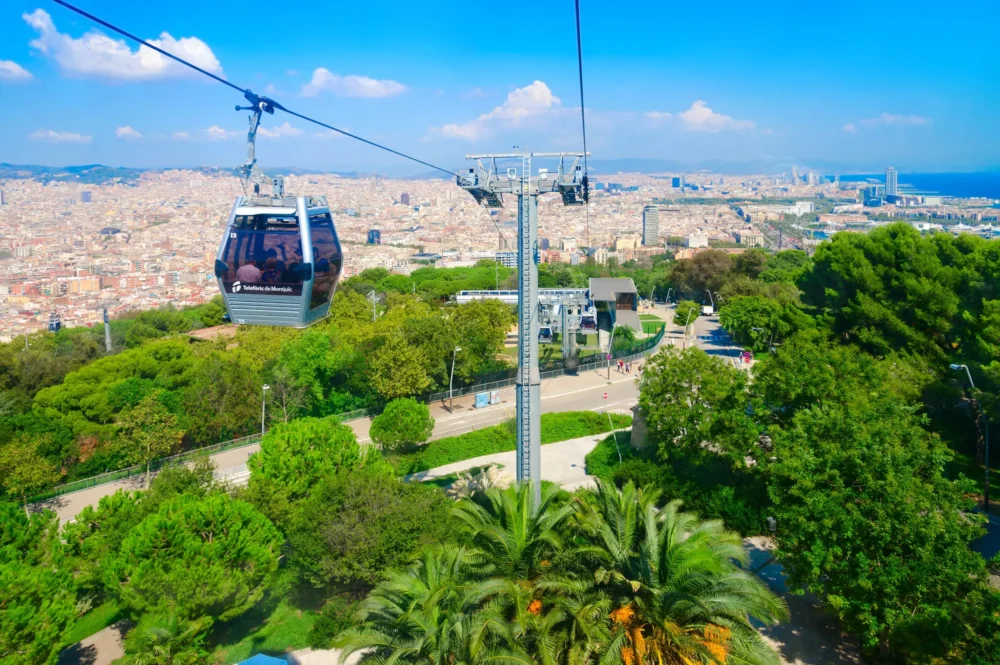
The Montjuic cable car in Barcelona is the most convenient way to get to the top of the mountain of the same name, where the castle stands. Its length is 750 meters, and during a ten-minute ride, you can see almost all the sights of the city. The lower station is in Montjuic Park, and on the way back from the mountain the funicular has an intermediate station called Mirador with a beautiful park. Fifty cabins move non-stop at a comfortable speed for boarding and disembarking passengers. It is better to purchase tickets for Telefèric de Montjuïc in advance.
Read also: Montjuïc Barcelona cable car — everything you need to know before visiting
Casa Batlló
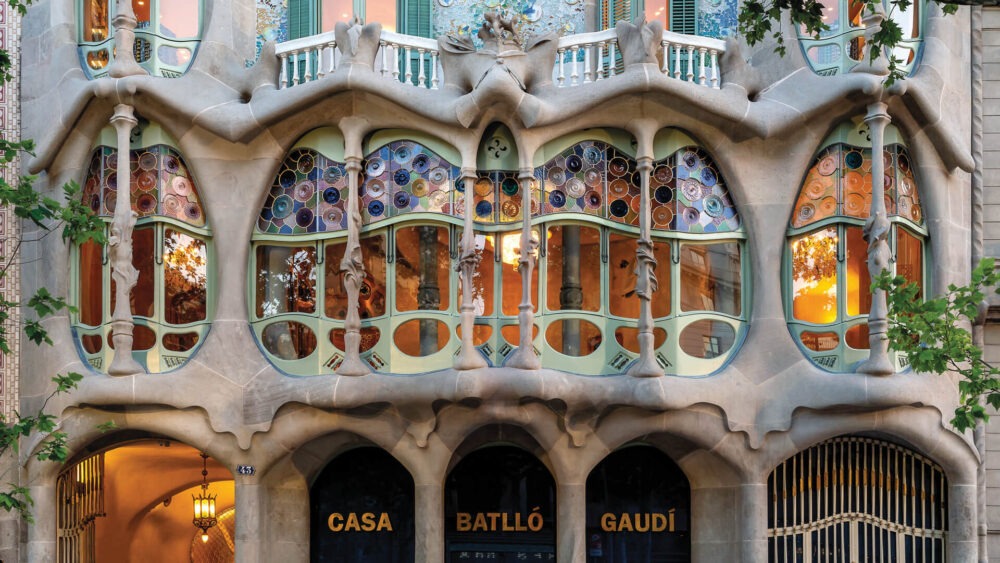
Casa Batllo is a unique house in Barcelona. It was originally built in 1877 but acquired its recognizable appearance in 1904-1906 when Antoni Gaudi took on its renovation. This project was ordered by a textile magnate who lived in this building. In addition to the exterior, the architect modified the interiors by adding a basement, attic, and asotea. The facade of the building boasts curved lines, stained glass windows, wrought iron elements, tiles, and ceramic cladding. It is believed that this appearance is inspired by the legend of the victory of St. George (the patron saint of Catalonia) over the dragon. The columns represent the bones of the animal, the balconies represent the skulls of its victims, the bright tiles represent the scales, and the tower with the cross represents the sword of the saint. The best way to experience this architectural wonder is to purchase an entrance ticket accompanied by an audio guide.
Dali Theater-Museum (Teatro-Museo Dalí)
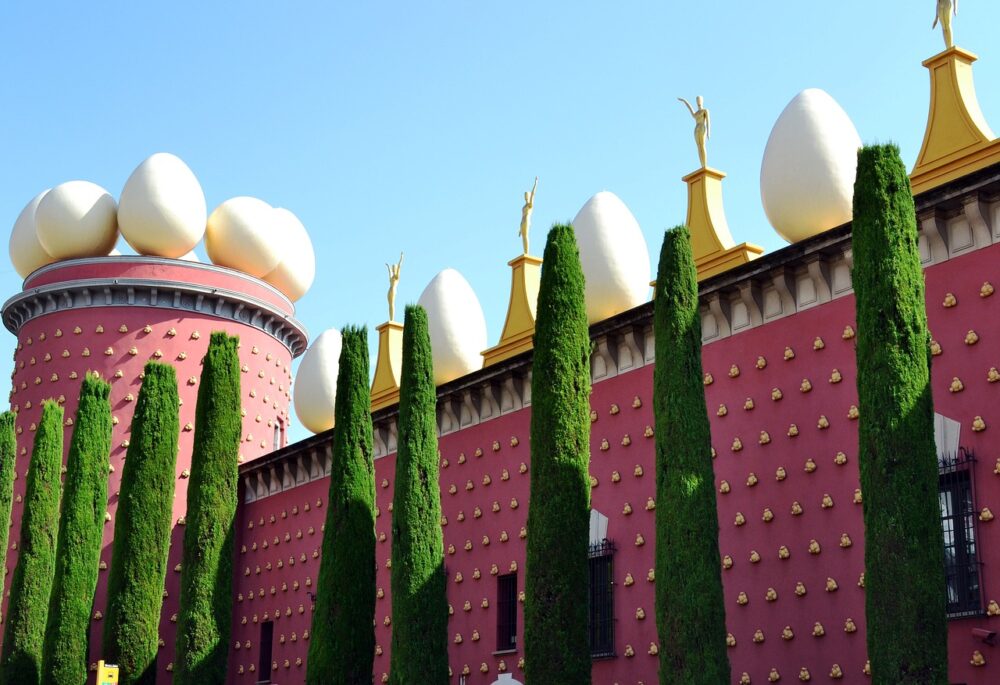
The Dalí Theater-Museum is located in the city of Figueres, 140 kilometers from Barcelona in northern Catalonia. The eccentric artist lived here from 1984 to 1989 and is buried in a crypt under the stage. It is interesting that the museum itself was built during the lifetime of the brilliant master to revive the old city theater. Of course, the building is made in the spirit of Dali’s outlandish creativity — the red walls are decorated with numerous bread products and topped with huge eggs. The Teatro-Museo Dalí houses the world’s most complete collection of paintings, sculptures, and mechanical inventions by the artist. One of the most famous exhibits is a living room installation with a sofa in the shape of lips, which, when viewed from the right angle, turns into the face of actress Mae West. The guided tour will allow you to learn the history of Salvador Dali, immerse yourself in his extraordinary work, and visit not only the museum but also places associated with the artist in Figueres.
Costa Brava
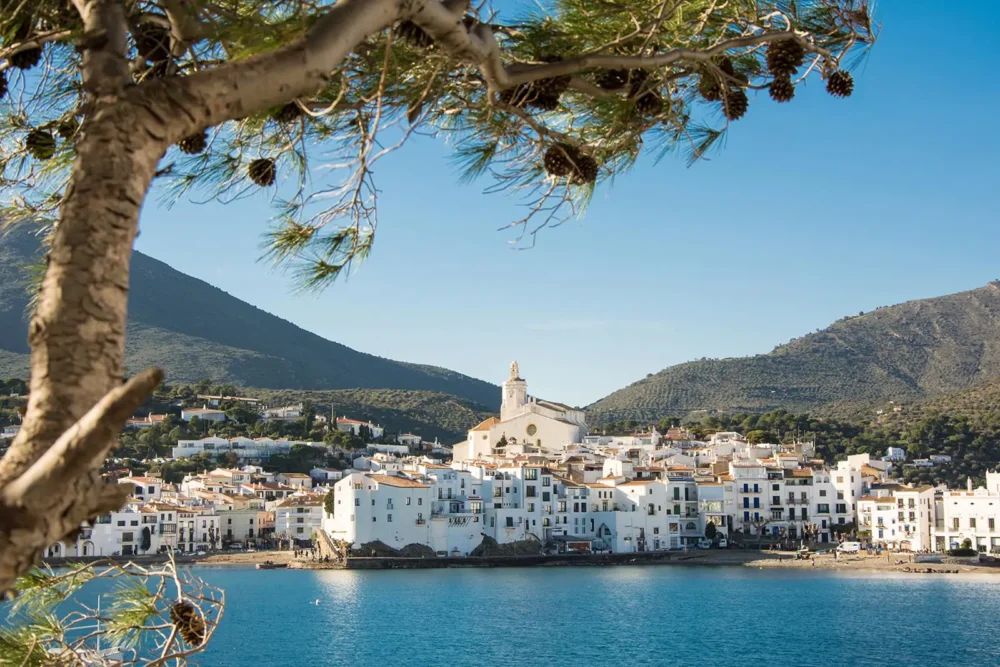
Costa Brava is the northeastern coast of Catalonia in the province of Girona in Spain. This territory stretches from the city of Blanes to the border with France and consists of three districts (comarca) — Selva, Baix Empordà, and Alt Empordà. Girones and Pla de l’Estany are often added to these.
It is a rocky area with beautiful Blue Flag beaches. There is everything you need for a good holiday – hotels, restaurants, water parks, nightclubs. What are other things to do in Costa Brava besides lying on the beach? Castles, temples, and numerous museums are responsible for the cultural program. The largest cities and resorts of the Costa Brava in Spain are Pals, Lloret de Mar, Blanes, Tossa de Mar, Figueres, Castell Playa de Aro, and Cadaques. You can get to know the Costa Brava and Girona on a one-day tour from Barcelona.
Costa Dorada
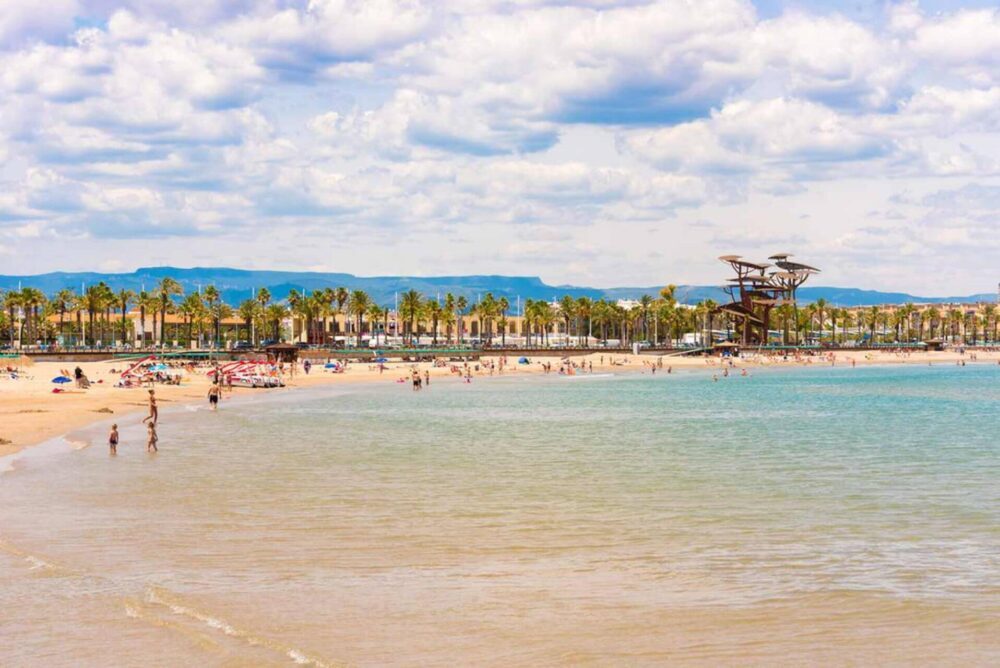
Costa Dorada is a resort area in the northeast of Catalonia in the province of Tarragona. It runs from the mouth of the Foix River to the Ebre delta and is 81 kilometers long. Many beaches here are marked with the Blue Flag, which confirms the purity of water and sand, the availability of infrastructure, and environmental friendliness. In addition to water sports, golf is popular in Costa Dorada, as evidenced by the large number of specialized clubs with quality courses. Extreme lovers will love the PortAventura World entertainment complex with exciting rides. Among the most popular resorts are La Pineda, Salou, Cambrils, and L’Amelho de Mar.
Sitges
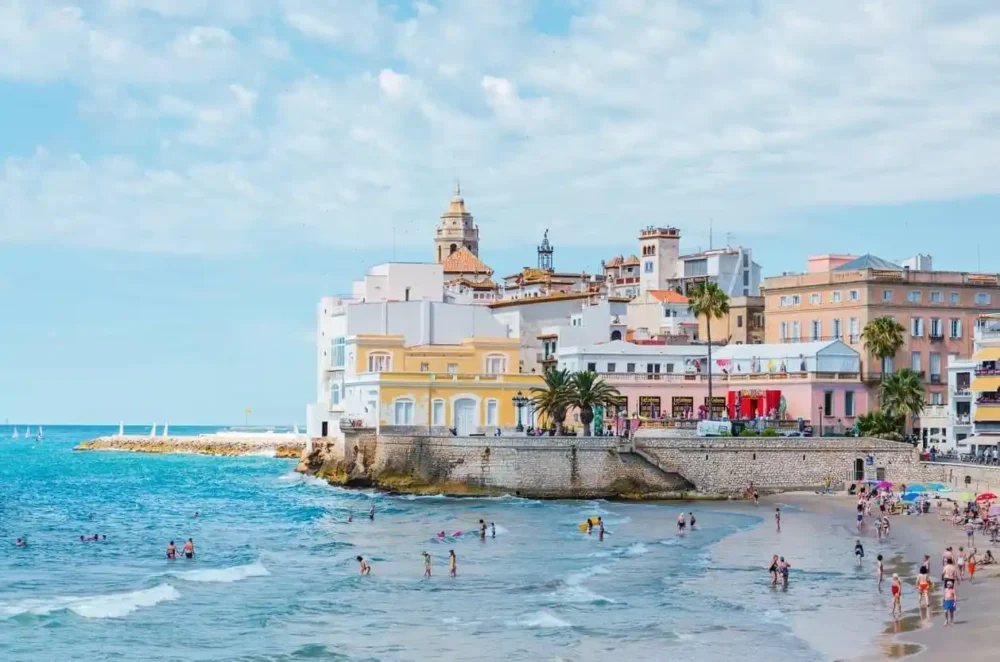
Sitges is one of the most popular resort towns in Catalonia and Spain, less than 40 kilometers from Barcelona. It is located in the Costa de Garraf resort area and has all the necessary components of a European historical recreational area — ancient architecture, picturesque narrow streets, and beautiful beaches.
What are things to do in Sitges besides relax? Visit the International Catalan Fantastic Film Festival (Festival Internacional de Cinema Fantàstic de Catalunya), held in the fall, and go to the Cau Ferrat Museum, the former home of the artist and writer Santiago Rusiñol. In addition to his works, works by Picasso, Casas, and Pichot are presented here. The museum also houses collections of forged items, glassware, and ceramics collected by the owner of the house. You can take a day trip from Barcelona to Sitges. The program of this tour also includes a visit to Tarragona.
Things to do in Catalonia
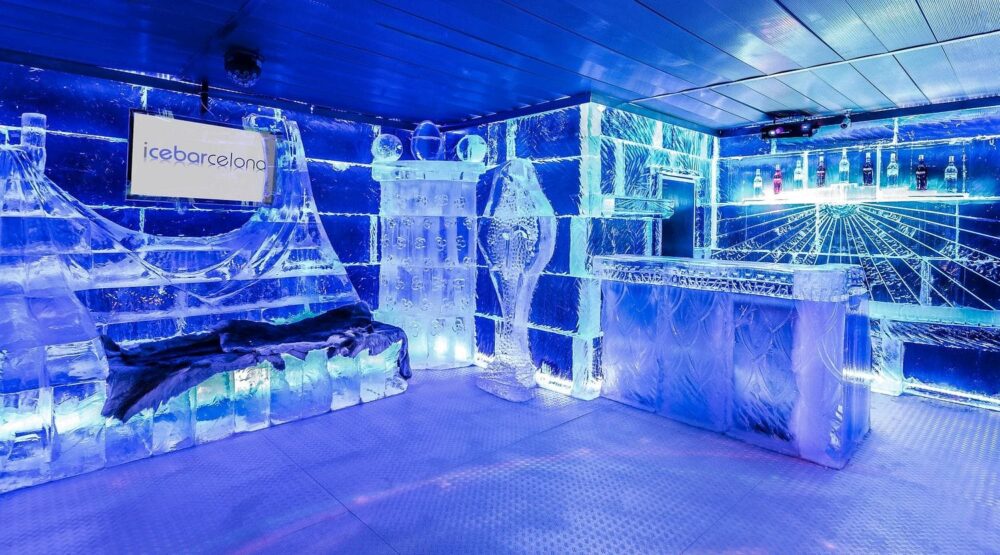
It’s impossible to get bored in Catalonia because there are activities for everyone. There are unique offers for film buffs, football fans, people who want to get acquainted with Spanish music and dance, and lovers of bar culture. Active tourists will love the ski resorts, the coastline where you can practice a variety of sports, and helicopter flights over Barcelona. We offer you the following leisure options.
- Travel to Westeros and Braavos with a tour of the Game of Thrones filming locations in Girona. The Cathedral is easily recognizable as the Great Sept, the old town of Girona became Braavos, where Arya Stark’s early adventures took place, and the Monastery of Sant Pere de Galligans became the stronghold in Oldtown, where Sam Tarly arrived to train as a maester.
- See Barcelona from a bird’s eye view. Don’t miss the opportunity to take a helicopter tour over the capital of Catalonia. This will give you a unique chance to see all the sights from an unusual angle, enjoy the beauty of the local nature, and admire the geometric square structure of the old city.
- Have a shot at the ice bar. The Barceloneta area is home to the world’s first beach ice bar, Icebarcelona. It works all year round and updates the “interior” twice during this period. Guests are provided with hats, jackets, and gloves, and drinks are served in ice-cold glasses. You can warm up after visiting the ice kingdom on the open terrace.
- Attend an FC Barcelona football match and visit the team museum. This is one of the most titled clubs in the world, having won the Spanish Championship many times, as well as the Champions League. Their home stadium, Spotify Camp Nou, is the largest in Europe. Among the most famous Barça players are the names of Ronaldo, Ronaldinho, Messi, Neymar, Iniesta, and Suarez.
- Watch the flamenco show at the Los Tarantos club in Barcelona‘s Royal Square. This is a vibrant performance with traditional Spanish dances and songs accompanied by guitar music.
- Relax on numerous beaches. The entire eastern part of Catalonia is the Mediterranean coast with picturesque beaches. Here you can either simply sunbathe under the Spanish sun or engage in water sports – kitesurfing, diving, kayaking, paddleboarding, yachting, and much more. Among tourists coming to Spain, not only the Costa Brava is popular, but also the Costa del Maresme with the city of Calella in the center.
- Try winter sports in the Pyrenees. Catalonia has several excellent ski resorts. La Molina is the oldest winter sports base in Spain. Bequeira-Beret is the largest and most visited resort in the country. Also worth paying attention to are Boí Taüll, Masella, and Port del Comte.
- Explore ancient castles and monasteries. Catalonia is a region with a rich historical and religious heritage, which is reflected in the amount of ancient architecture. In addition to the Monastery of Montserrat, popular among tourists are Poblet (Santa Maria de Poblet) in Montblanc Spain, Sant Pere de Rodes, Santes Creus, Pedralbes (Santa María de Pedralbes), and Sant Pere de Casserres. The most famous castles in Catalonia that are worth visiting are Montjuïc, Cardona, Begur, Castell de Sant Ferran, and Castell de Peralada.
- Visit the most beautiful villages. In Spain there is an association with the same name, which is dedicated to the preservation of rural heritage and its promotion. In Catalonia, you will find three similar settlements — Beget in the province of Girona, Artiés and Bagergue in Lleida. The list of beautiful villages in Spain does not include Rupit, but this 1000-year-old settlement is worth a visit. Here, time seems to have frozen forever, allowing you to travel back in time.
- Take a day trip from Barcelona to Cadaques. It is a municipality in the province of Girona on the Costa Brava. It is famous for its white houses with terracotta tiled roofs. Cadaques was loved by Dali, Picasso, Duchamp, and other creative people, who gave impetus to the place being not just a resort destination, but also an artistic center with museums and galleries.
Where to go with children in Catalonia
There are several places in Catalonia that children of all ages will love. It is an amusement park, water park, zoo, miniature park, and interactive museum.
CosmoCaixa Science Museum
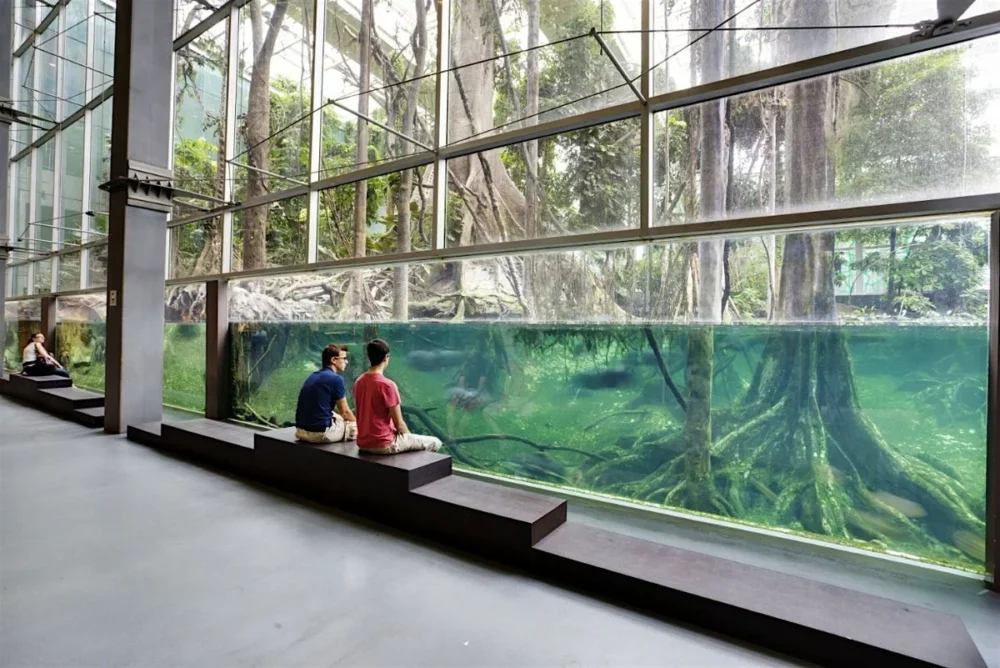
CosmoCaixa is a science museum in Barcelona with interactive exhibits that you can interact with in a variety of ways. Permanent exhibitions are dedicated to geological processes, the Amazon forest, cosmic matter, stages of the development of the Universe, and various sciences. There are safe areas for little ones where they can touch everything around them. CosmoCaixa also has a digital planetarium. The museum constantly hosts interesting lectures, master classes, and various events for children. You can find out about current exhibitions and events, as well as purchase tickets on the website.
Aquarium Barcelona (Aquàrium de Barcelona)
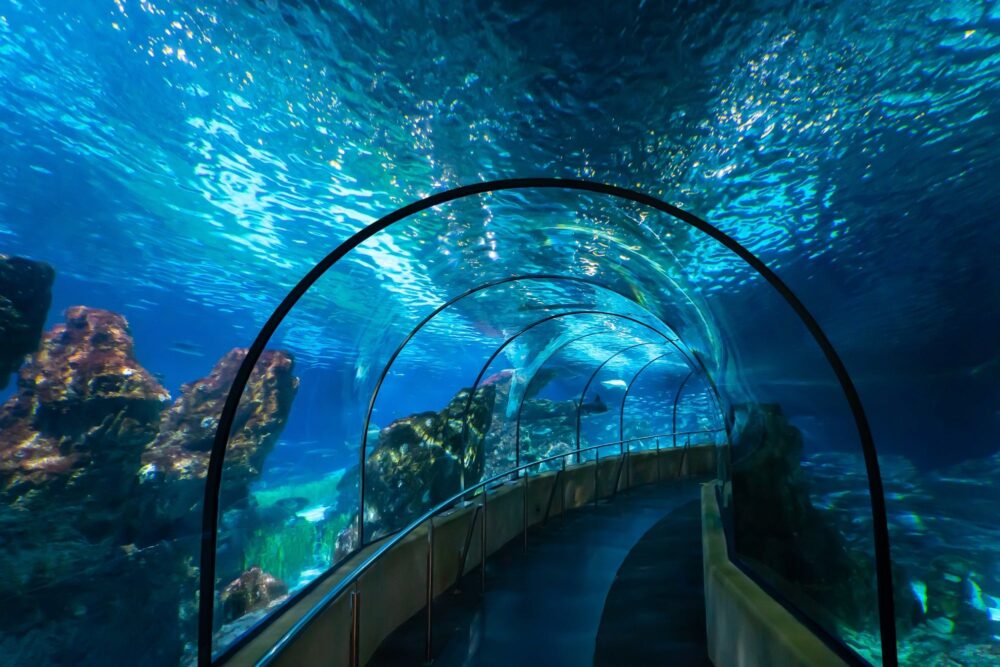
The Barcelona Aquarium is the largest in Europe. It is also one of the best centers on the planet for the study and conservation of the underwater world of the Mediterranean Sea. It is home to about 11 thousand marine inhabitants — fish, shellfish, jellyfish, and corals from different ecosystems. In addition to representatives typical of the Mediterranean, here you can see fish living on the Great Barrier Reef, as well as in the Caribbean and Red Seas. An 80-meter transparent tunnel runs through the Aquàrium de Barcelona, creating the illusion of being on the seabed. Having taken care of your tickets in advance, you can go inside, skipping the line.
Children from 8 to 12 years old have a unique opportunity to spend the night in the aquarium, observing how sharks and other marine inhabitants behave at this time of day. The program includes excursions, games, dinner, and breakfast. You need to take a sleeping bag, a change of clothes and toiletries with you. You must reserve your place in advance. All the necessary information is on the official website of the aquarium.
Barcelona Zoo (Parque Zoológico de Barcelona)
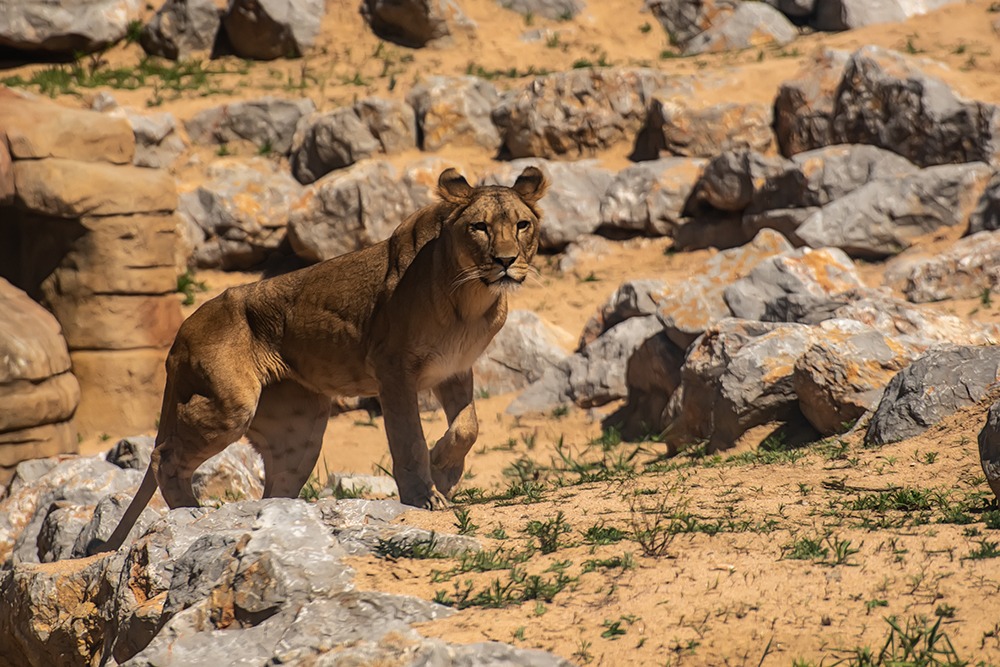
The Barcelona Zoo is located in the Ciutadella Park. Here you can see more than 300 species of animals from all over the world. Among them: hippos, monkeys, lions, penguins, orangutans, sea lions, tigers, and leopards. On the territory of Parque Zoológico de Barcelona, there are several separate areas — the Land of Dragons, the Terrarium, the Aquarium, the Primate Gallery, the Marmoset Gallery, the Palm Grove, the Aviarium, and the Biodiversity Garden. The zoo regularly hosts educational and entertaining events for the whole family. You can find out about current events on the website. To explore all the exhibitions at a leisurely pace, you can buy a ticket for the whole day.
Waterpark Illa Fantasia
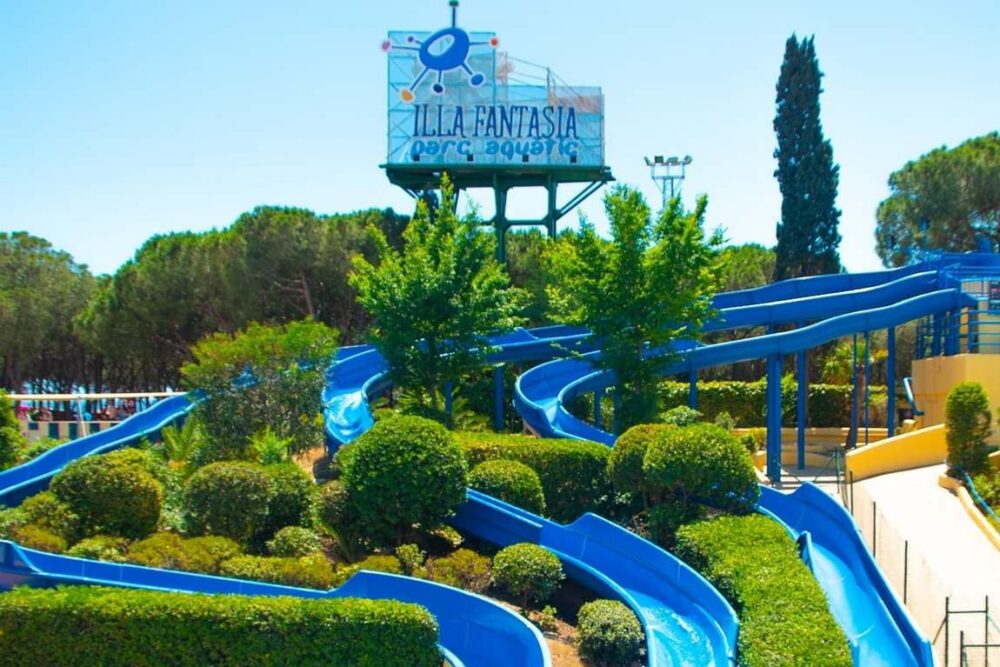
Illa Fantasia is one of the oldest water parks in the world, located 25 kilometers from Barcelona. On its territory, there are more than 20 slides of varying levels of extremeness, three large swimming pools, and a picnic area with tables and barbecues. A small Pirate Maze area has been designed for children with low slides, splash pads, and a giant barrel from which huge amounts of water periodically erupt. Illa Fantasia has restaurants and a gift shop on site. Since this is an outdoor water park, it operates seasonally from June to September. You can find out the exact opening dates and purchase a ticket on the website.
Catalunya en Miniatura Park
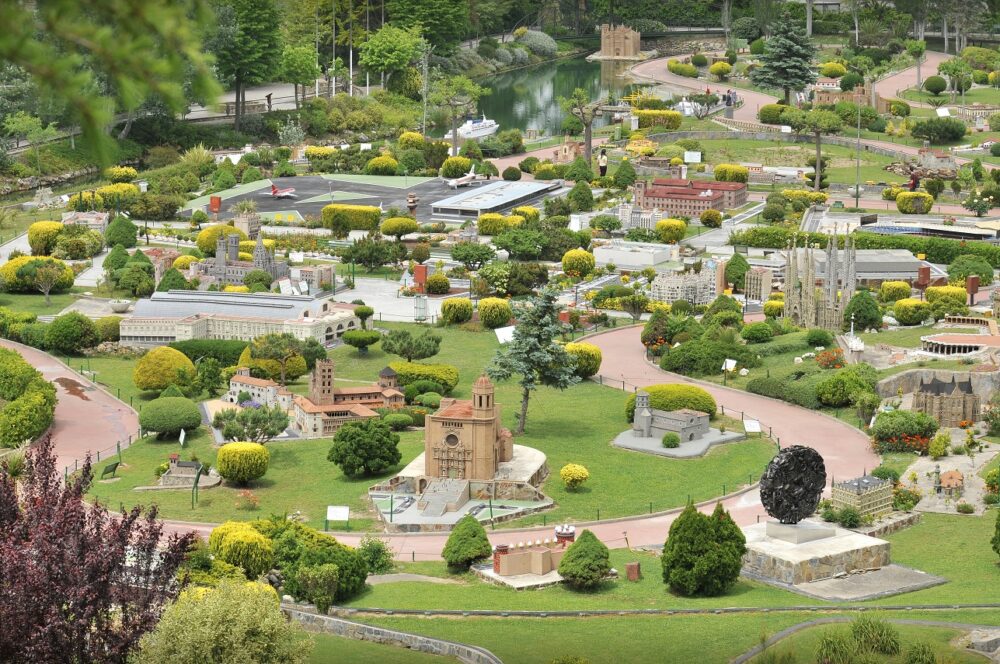
Catalunya en Miniatura is a park 13 kilometers from Barcelona. This is a great place to explore Catalonia in a couple of hours and a unique opportunity to see all the main attractions of the autonomous community in 1:25 scale in one place. There is also a rope town with a zip line and a restaurant with a terrace. Catalunya en Miniatura regularly hosts seasonal entertainment events. Their program is described in detail on the website. A mini-train travels through the park, during a ten-minute journey on which you can quickly explore the entire territory. It is best to purchase tickets to Catalonia in Miniature in advance.
PortAventura World Theme and Leisure Park
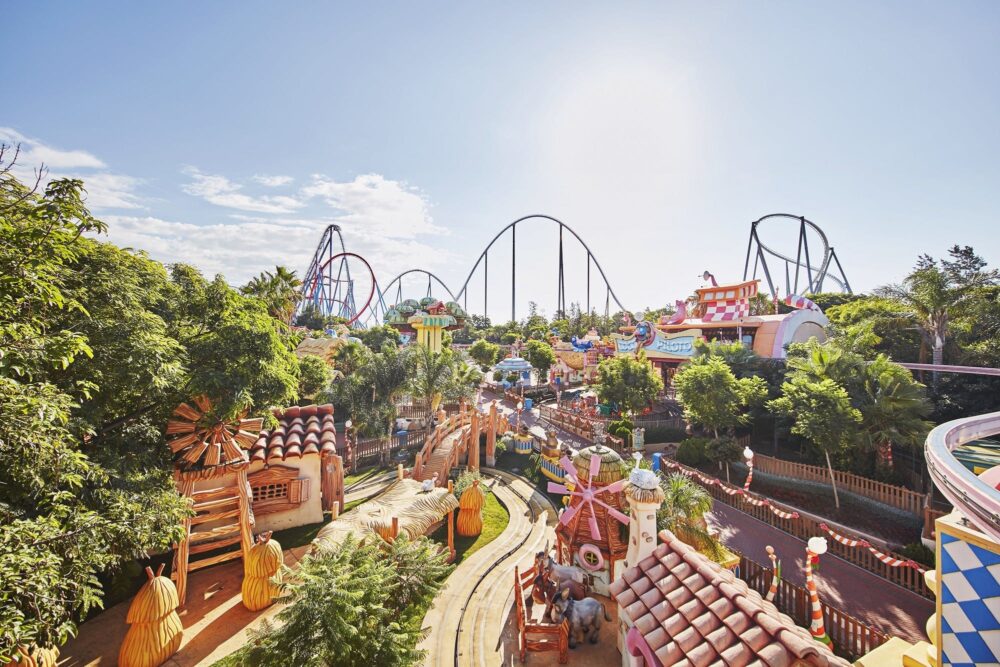
PortAventura World is a huge complex near the city of Tarragona in Catalonia. It consists of the amusement parks PortAventura Park and Ferrari Land, the Caribe Aquatic Park and several themed hotels. This is the largest such complex in Spain and one of the largest in Europe. PortAventura Park is divided into six themed areas, dedicated to different civilizations and, unexpectedly, to the children’s show Sesame Street. Ferrari Land is inspired by Italian architecture and the famous sports car brand. Home to Red Force, one of the tallest and fastest roller coasters in Europe. The parks host special events on Halloween and Christmas. Tours to the entertainment complex are organized from Barcelona.
Routes in Catalonia
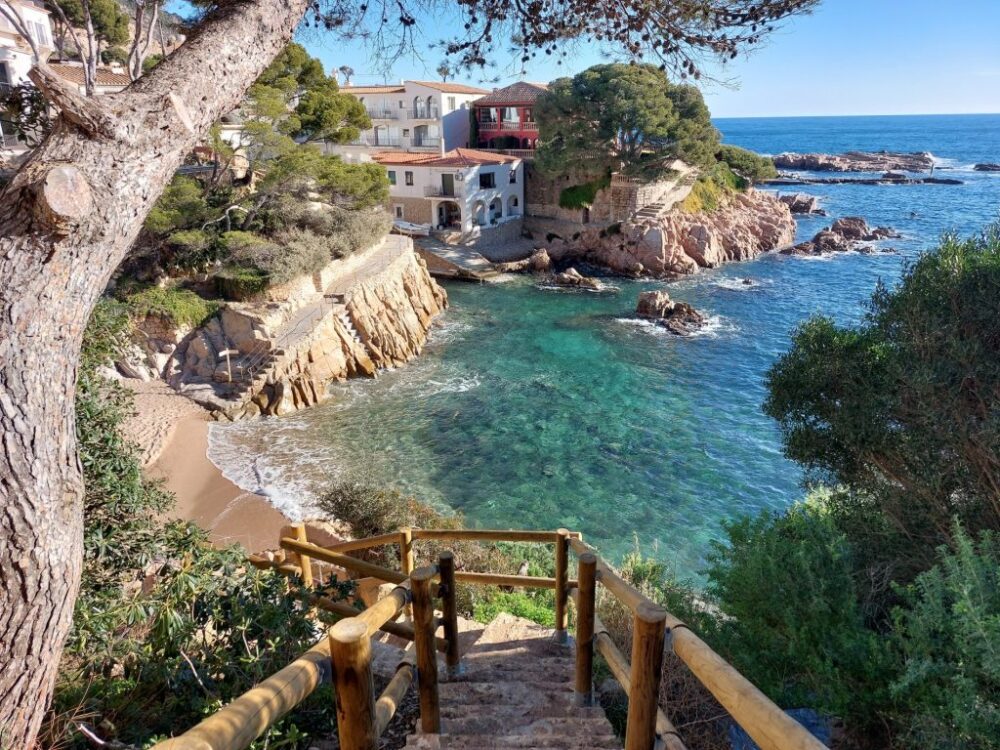
Several routes in Catalonia allow you to get to know this region better. Among them are places associated with Salvador Dali and Antoni Gaudi, ancient castles, impressive monasteries, and natural beauty.
Dali Triangle
The Dali Triangle is a route through three places in Catalonia associated with the born, life, and death of the eccentric artist Salvador Dali.
It includes the city of Figueres and the villages of Pubol and Port Ligat. Figueres is home to the famous Dali Red Theater and Museum with large sculptures of eggs on the roof. This is the master’s hometown, and he initiated the opening of this institution in 1974. His grave is located here under the stage.
In the village of Pubol (40 kilometers from Figueres), there is a castle from the 12th century. Salvador gave it to his wife Gala, who spent her final years there and found her final refuge. Dali could come here only with the written agreement of his wife. A collection of Gala’s outfits, her personal belongings, and antique furniture are exhibited here. Among the premises, the throne room, a garage with a vintage Cadillac and a gloomy crypt in the basement stand out. The interiors are decorated with unusual paintings by the artist, often with false elements. You should go to the castle garden with amazing sculptures.
The last peak of the triangle is the village of Port Ligat near the fishing village of Cadaques. There is a summer house here, which is easily recognizable by its unusual shape, characteristic of the artist’s works. Inside, the building resembles a labyrinth, because it is several houses connected. The interior is filled with whimsical sculptures, furniture and, of course, paintings. In the courtyard there is a swimming pool, a lip-shaped sofa, and a dovecote. You can travel around these places in one day, and an experienced guide will tell you many amazing stories about the couple Salvador and Gala.
Camí de Ronda
The Camí de Ronda route runs along the Costa Brava. There is a linear path and a circular one. The first one is 43 kilometers long and lasts two to three days, depending on the level of physical fitness. It starts from the village of Sant Feliu de Guíxols and ends in Begur. The circular route is 140 kilometers long and lasts 8 days. The journey begins and ends in Girona and follows part of the linear road. Camí de Ronda has a website where you can study maps, book places to stay overnight, and find out what equipment you need.
Gaudi route
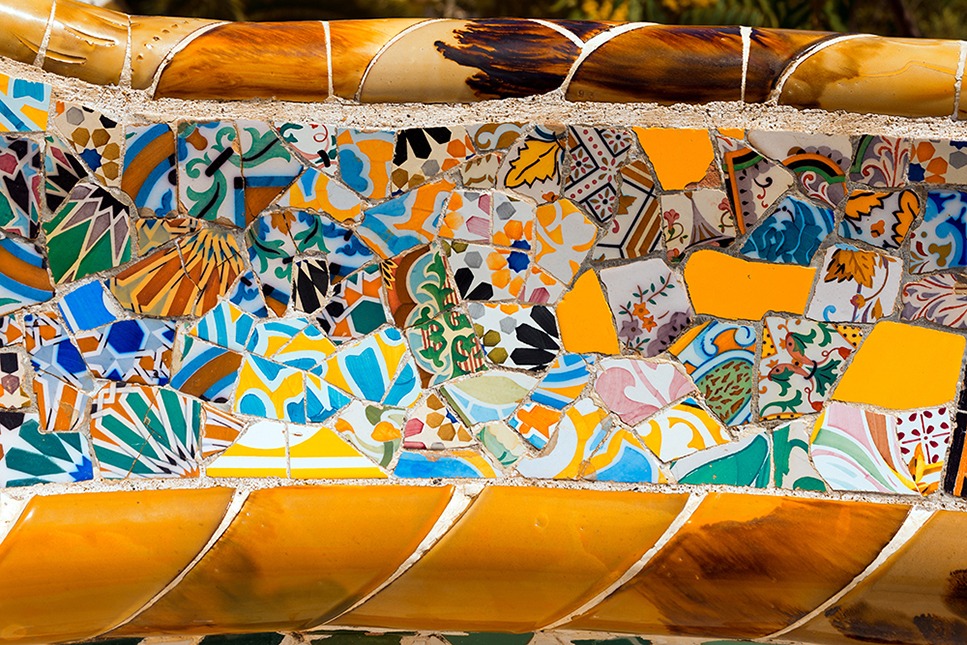
The Gaudí Route is an unofficial route to explore the architect’s major works in Barcelona. It includes the Sagrada Familia, Park Güell, Casa Batllo, Casa Vicens, Palace Güell, Casa Calvet and Casa Mila. You can see the main places in one day. It is most convenient to do this as part of an excursion group. Gaudi’s works can be found in other Spanish cities, but visiting them is not part of the itinerary due to the long distances.
Wine route La Carretera del Vi
La Carretera del Vi or the Mediterranean Wine Route is a wine route that runs along the road connecting the vineyards of the Penedès region near Barcelona with the Costa del Garraf resort area. It is 33 kilometers long and passes through seven municipalities, allowing you to discover the wine history and culture of Catalonia, while exploring the architecture and tasting traditional dishes. The linear route starts from the town of Sant Martí Sarroca and ends in Sitges. For the full experience, tourists are encouraged to buy a so-called passport, which provides many benefits in the form of discounts, gifts, free wine tastings near Barcelona. Each winery is given a stamp confirming its visit. You can register a passport on the official website of the route; it also contains all the necessary information about hotels, restaurants, museums, and attractions along the way.
Pyrenean Way
The Pyrenees Way is a scenic mountain route in Catalonia that can be done by car. It starts in the Aran Valley or, as it is also called, Val d’Aran in Lleida, passing through the Pallars Sobirà area. Next, the road goes through the city of Seu d’Urgel, where the only cathedral in Catalonia, built in the Romanesque style, is located. Afterwards, it is proposed to drive along the Segre River to the La Cerdanya region, where the La Molina ski resort is located. The route then goes to the city of Ripoll with the fantastic monastery of Santa Maria de Ripoll. The path continues through the volcanic zone of La Garrocha. Finally, following the Fluviá River, the route ends in the Alto Ampurdán district, in whose main city, Figueres, Salvador Dalí was born and died. The most convenient way to follow this route is by private car.
Cistercian route
The Cistercian Route or Route GR 175 is a route connecting three monasteries belonging to the Cistercian Order, founded in 1098 by Catholic Benedictine monks. The route can be covered on foot or by bicycle. Its length is 103 kilometers. It is customary to start with the Poblet Monastery (Reial Monestir de Santa Maria de Poblet, Real Monasterio de Santa María de Poblet) in the Conca de Barbera region in the province of Tarragona. It is listed as a UNESCO World Heritage Site and contains the burial places of the Kings of Aragon. Next, the route passes through the convent of Santa Maria de Vallbona (Vallbona de les Monges Monastery, Santa Maria de Vallbona de les Monges). It is located in the Comarque of Urgell in the province of Lleida. It was erected in the 12th century — in the appearance of the building you can see a combination of Gothic and Romanesque architectural styles. Inside are the tombs of the wife of King Jaime I of Aragon, Yolanda of Hungary, and their daughter Sancha. The Cistercian Way ends at the Santes Creus Monastery (Reial Monestir de Santa Maria de Santes Creus, Real Monasterio de Santa María de Santes Creus), built in the 12th century in the province of Tarragona. As in other places on the route, here are the tombs of the Aragonese kings. This is a circular road, so you can start from any point.
Festivals and holidays in Catalonia
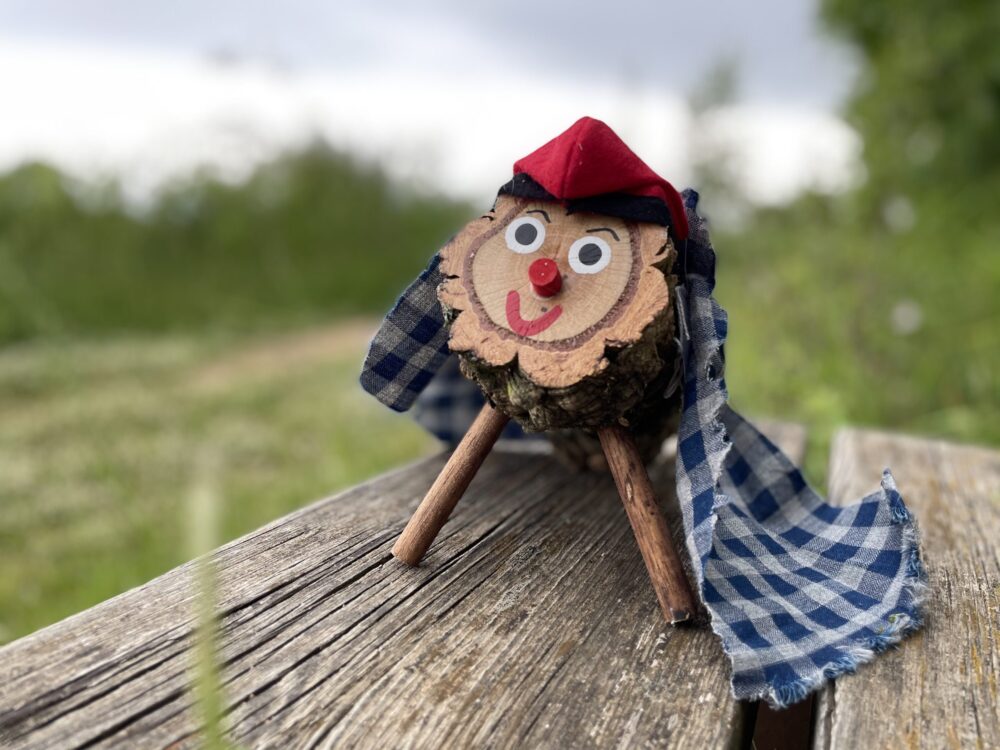
Throughout the year, large-scale festivals and celebrations are held in Catalonia. Almost each of them is associated with religious traditions. The exception is the gastronomic festival Calçotada.
Feast of the Three Kings (Cabalgata de los Reyes Magos)
The Feast of the Three Kings is celebrated in Spain on January 5th. The rulers are the wise men who brought gifts to little Jesus. They walk through the streets of cities, including Barcelona, accompanied by magical creatures scattering candy and postmen to whom children hand letters for kings. The monarchs arrive in the city by sea and receive a symbolic key from the mayor so that they can deliver gifts to all the children overnight. Naughty children in the morning find a bag of “coal”, the role of which is now played by colored sugar, and good kids receive hidden gifts. Afterward, the family gathers for lunch with Tortell de Reis, a huge donut filled with marzipan and decorated with candied fruits and nuts. It is customary to put surprises in it. Anyone who finds a small figurine of the king will be happy all year. And the person who finds the beans will have to pay for Tortell de Reis next year.
Festival of Calçotada
Calçotada is a winter Catalan tradition that can be seen from November to April. It is dedicated to eating the fresh harvest of calçota (a type of green onion). This vegetable is eaten throughout Catalonia, but it is best to try it in its homeland — the city of Valls in the province of Tarragona. On the last Sunday of January, the Great Calçotada Festival is held here. During it, you can eat calçotas, cooked on the grill and served with romesco sauce, watch how this dish is eaten at speed and just have fun.
Festival of Sant Jordi (Diada de Sant Jordi)
The Feast of Sant Jordi or Valentine’s Day is celebrated in Spain on April 23. It is dedicated to the patron saint of Catalonia, Saint George. Book Day is celebrated on the same date. Over time, these holidays merged into one. According to tradition, men give roses to their loved ones, and in return, they respond with a gift in the form of a book. That is why on this day bookstores put out counters on the street, where meetings with writers are often held. On April 23, it is customary to honor Catalan culture and identity, so publications dedicated to the autonomous community are sold first. Nearby you can always see trays with freshly cut roses.
Nativity of John the Baptist (Fiesta de San Juan)
The Nativity of John the Baptist is a Catholic holiday celebrated on the night of June 23-24. It is dedicated to the summer solstice and the birthday of St. John the Baptist. Festive events are held throughout Spain, but the most spectacular celebrations can be visited in Barcelona. It all begins a day earlier when a fire (Flama del Canigó) is lit on the top of the sacred Mount Canigó, which is transmitted to all localities of Catalonia as a symbol of unity. The flame arrives in Barcelona in the late afternoon, and at 17:00 the festive procession begins. It runs from Arístides Maillol to St. James Square, where a large bonfire is lit. This ritual is followed by dances of the giants (Gigantes de la Ciudad) and the Barcelona eagle of the Aliga (Àliga de Barcelona). Torches are lit from the fire to spread the fire to the rest of the city. Thus, bonfires appear in all areas, around which people have fun until the morning. It’s also impossible to imagine Fiesta de San Juan without a spectacular fireworks display.
Gracia Festival (Festa Major De Gracia)
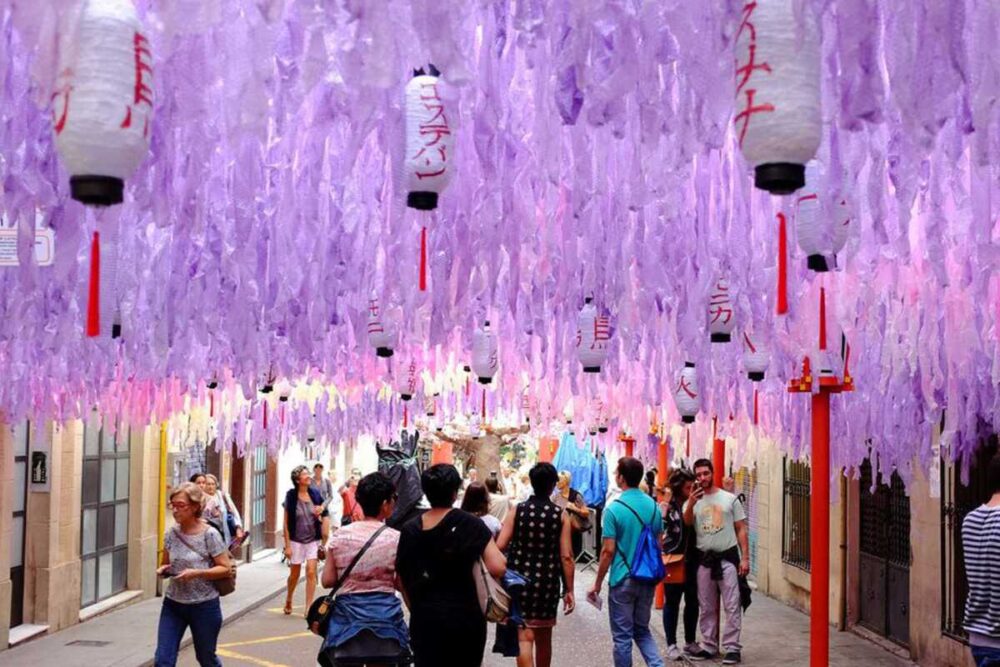
Gracia is a festival held annually in Barcelona from 15 to 21 August. It is named after the city district of the same name. The streets of this part of Barcelona compete for the title of the most elegant. The theme changes every year so residents can show their talents and imagination to the fullest, guaranteeing victory. As part of the Festa Major De Gracia, concerts, exhibitions, competitions, and parades with Castellers (masters of building a “living” tower of people) are held. The most popular event is Correfoc. This is a fiery race with sparkling fireworks in your hands. A detailed schedule of events is available on the official website of Festa Major De Gracia.
Fiesta de la Merce
Fiesta de la Merce takes place at the end of September over five days in Barcelona. It is dedicated to the patron saint of the city — Our Lady of Mercy (Mare de Deu de la Mercè). The history of the festival goes back more than 100 years. It took place for the first time in 1902. Its program includes free concerts and colorful processions. The most popular of the latter are the parade of giant figures (Gigantes y cabezudos) and the traditional Correfoc fire race. Children can participate in a lighter version of the latter. In St. James Square (Plaça de Jaume) you can see the famous towers of people – Castellers. In the evening, a laser show is projected on the facade of City Hall.
La Castañada
La Castañada is a Catalan holiday celebrated on October 31 before All Saints’ Day. On this day, it is customary to gather with friends and family for a dinner of roasted chestnuts, sweet potatoes, and panaets cookies. All this is accompanied by drinking red Muscat wine. On the streets, you can meet La Castañera — an old woman dressed in simple clothes and a scarf, selling chestnuts, which she immediately roasts on the fire.
Christmas (Navidad)
Christmas or, as it is called in Spain, Navidad, is the most important Catholic holiday in the world. In Catalonia, it is celebrated in a special way. However, the date remains unchanged — December 25, as does the tradition of getting together for dinner with the whole family. On this holiday, Catalans become obsessed with… poop. Children must take care of a special Kaga Tio log for three weeks, feed it, and beat feces out of it with sticks in the form of sweets and gifts on Christmas Eve. Also in the Catalan nativity scene, next to Mary, Joseph, and little Jesus, you can see a figurine of a caganer — a pooping peasant in a traditional red hat. It is a symbol of fertility and promises good luck.
New Year (Año Nuevo)
New Year is the night from December 31 to January 1. It is usually spent with family or friends. The main holiday tradition is to eat 12 grapes within 12 chimes while making wishes. This bodes well for the new year. At midnight, the sky usually lights up with fireworks, followed by loud dance parties. On December 31, Barcelona hosts the Cursa dels Nassos 10-kilometer race, in which anyone can participate. On January 1, the Primer Bany de l’Any is held on Playa de San Sebastian — the first swim of the year in the Mediterranean Sea.
Cuisine of Catalonia
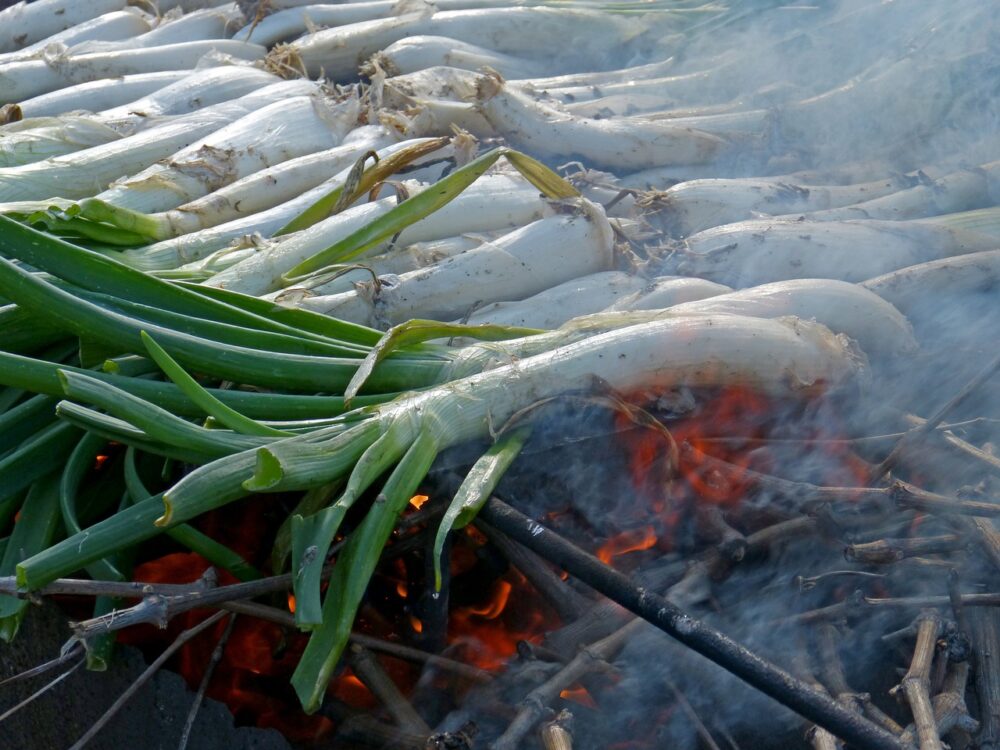
The cuisine of Catalonia is diverse. There are dishes for vegetarians and meat-eaters, lovers of sweet and savory foods, and fans of seafood and soups.
Catalan cream (Crema Catalana)
Catalan cream is the most famous Catalan dessert. It looks and tastes like French creme brulee, but is made with milk rather than cream. This sweet also contains sugar, egg yolks, and cornstarch. This mixture is baked in small pans and then sprinkled with sugar, which is burned with a torch to create a crispy crust. Sometimes cinnamon, lemon, or orange zest is added to crema catalana. The dessert also has the name Cream of St. Joseph, in honor of which it was traditionally prepared on March 19th.
Calçots
Calsot is a type of green onion. It grows only in one place — in the city of Valls in the province of Tarragona. Only here can I grow calçots; all other varieties of this vegetable grown outside of Valls are not entitled to this name. Calçots differ from the usual green onions by being thicker and having a longer white part. The harvest is harvested in winter, celebrated with the Calçotades festival. Calçots are prepared very simply — grilled until the top layer is charred. After this, they are wrapped in newspaper or paper to keep warm. These vegetables are eaten with your hands, removing the top layer and dipping them in Romesco sauce, consisting of roasted tomatoes, bell peppers, garlic, roasted almonds, and vinegar. The main trick is to tilt your head high and put the onions in the sauce into your mouth without getting dirty.
Bread with tomatoes (Pa amb tomàquet)
Bread with tomatoes is the simplest but very popular dish in Catalan cuisine. It looks and prepares as easy as it sounds. Essentially, this is a type of Spanish tapas. First, fresh bread is taken and cut into slices, which, if desired, can be fried. They are rubbed with ripe tomatoes, poured with olive oil, and sprinkled with salt. This dish can be eaten separately or as an addition to fried vegetables, meat, fish, and cheese. The most suitable type of bread for pa amb tomàquet is rustic pas de pagès.
Escalivada
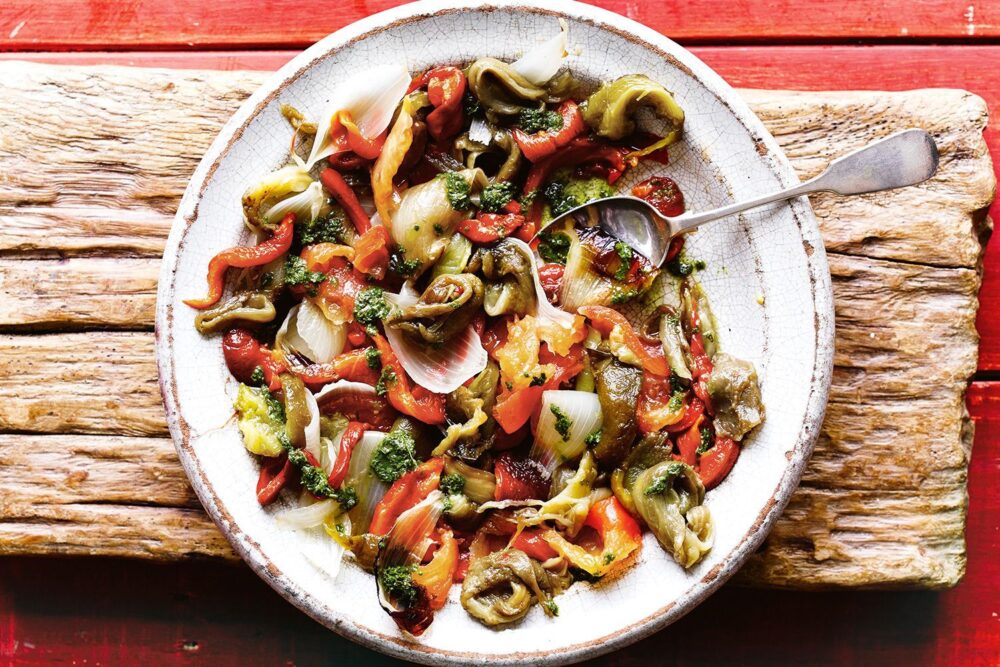
Escalivada is a dish consisting of baked eggplants, sweet peppers, and sometimes onions and tomatoes. They are baked in the oven or grilled in their skins, then peeled, cut into thin strips, and laid out in layers on a deep plate. All this is poured with olive oil and wine vinegar and sprinkled with finely chopped garlic. Escalivada is served as a cold appetizer. Bread and anchovies are often added to the dish.
Fricando
Fricando is a traditional veal or beef stew. First, thinly sliced meat is dredged in flour and fried in olive oil until golden brown, and then removed from the pan. Next, onions are sauteed in meat juice, to which grated tomatoes are later added, after which the mixture is stewed. A little later they are accompanied by seasonal mushrooms, fried meat and wine. All this is cooked until the veal is soft, and at the end chopped garlic, almonds and parsley are added. Fricandó is usually made the day before serving to give it time to steep. You can use potatoes and rice as a side dish.
Canelons
Canelons is a Catalan dish originating from Italy. It came to the region due to centuries-old active trade between the Spaniards and Italians. This is a large cylindrical pasta that is stuffed with meat and baked with bechamel sauce and cheese. The type of meat is at the discretion of the cook. Canelons can also be filled with seafood, mushrooms, and vegetables.
Palamós Shrimp (Gambes de Palamós)
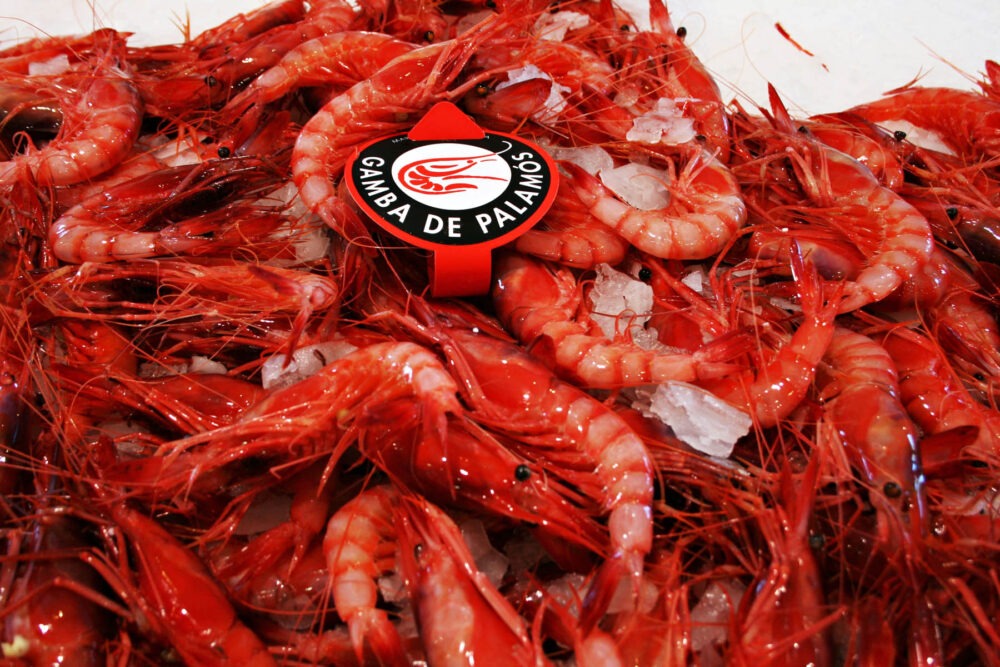
Palamos shrimps are an iconic dish of the Costa Brava, namely the city of Palamos. They stand out for their intense red color, sweet taste, and unique aroma. Thanks to their bright taste, they are easy to prepare on the grill. They are also served fried in aromatic oil. Of course, the freshest shrimp are prepared in Palamos restaurants. Carefully check that the establishment has the Gambes de Palamós guarantee seal, confirming the authenticity of the shrimp.
Botifarra sausage with beans (Botifarra amb mongetes)
Sausage with beans is a simple and nutritious high-calorie dish. Botifarra is made from pork with a lot of spices. It is then fried on a grill or frying pan. White beans are pre-boiled and then fried in olive oil. Botifarra amb mongetes is served with aioli sauce consisting of salt, garlic, and olive oil. This dish can be eaten both for lunch and for breakfast esmorzar de forquilla. There is a variety of botifarra with blood.
Trinxat
Trinxat is an iconic dish of the Cerdanha region in the Pyrenees. This is a mixture of boiled potatoes and cabbage pureed to an omelet-like structure. Trinxat is considered a winter-warming dish. It is usually served with crispy bacon.
Panellets
Panallets is a typical Catalan dessert. It is customary to eat it on November 1 — All Saints’ Day, which in Catalonia is called Castañada. Panellets consist of almond flour, sugar, eggs, lemon zest, and boiled potatoes or sweet potatoes. Balls are formed from this mixture, rolled in pine nuts, and baked in the oven.
Esqueixada
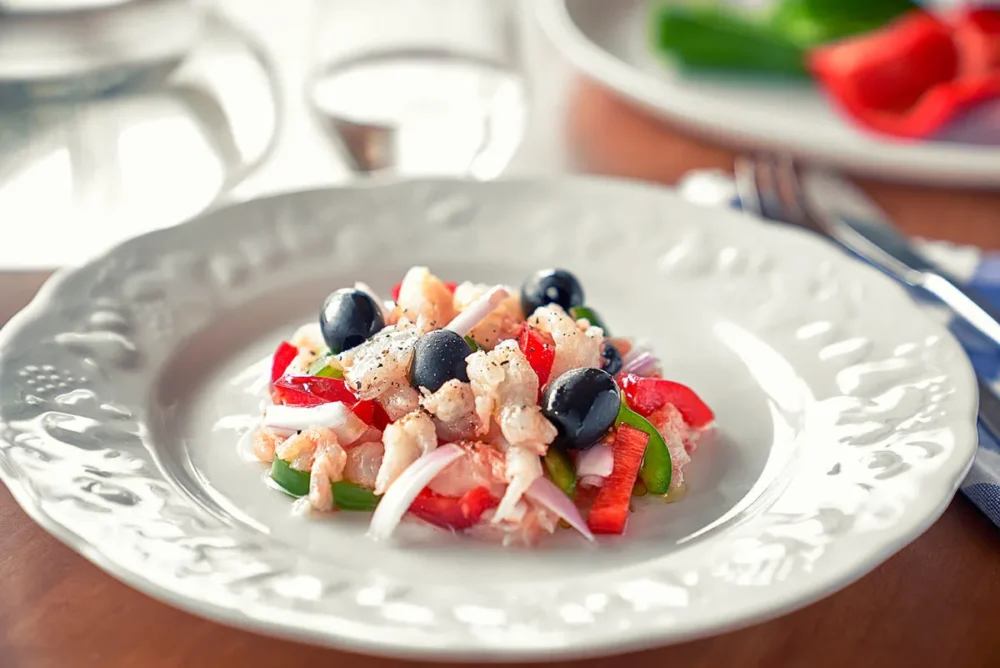
Esqueixada — salted cod salad with vegetables. It is typical of the Costa Brava and is perfectly refreshing in hot weather. Dried cod is pre-soaked for about a day to remove excess salt and soften it. Then the fish is torn into small pieces by hand. The name of the dish comes from the Catalan word “to tear.” Cod is mixed with red peppers, tomatoes, onions, and olive oil. Also sometimes boiled eggs, olives, and herbs are added to esqueixada.
Escudella i carn d’olla
Escudelha i carn d’olla is a special Catalan soup that is especially popular during the cold season. First, a rich meat broth is cooked from chicken, pork, and beef. Carrots, soaked chickpeas, celery, and onions are added to it. Next, a large meatball pilota consisting of ground beef and pork, garlic, egg, parsley, pepper, and breadcrumbs is thrown into the pan, along with potatoes and botifarra. After all the ingredients are cooked, they are taken out and shell-shaped pasta is added to the broth. Escudella i carn d’olla is served in parts — a separate broth with pasta and a separate plate with all the meat and vegetables. The meat for the broth and vegetables may vary, but the base of pilota and pasta remains.
Mel i mató
Mel i mató is a light and simple dessert. It consists of soft mato cheese made from goat, sheep, or cow’s milk. It is also called brossat or brull. It is laid out in a small deep bowl and poured with fresh honey. Nuts, jams, fresh and dried fruits can be added to the mel i mató.
Coca
Coca is a traditional Catalan sweet or savory flatbread baked in the oven like an Italian pizza. Coca de recapte is made with eggplant, red peppers, tomatoes, onions, and anchovies. Coca de San Juan is made from a sweet yeast dough with custard inside and then topped with candied cherries and ginger and pine nuts. There are several dozen variations of coca, depending on the area and upcoming holidays.
Cargols a la llauna
Cargols a la llauna is a true Catalan delicacy, typical of the Lleida region. These are snails cooked on the grill or in the oven. Before cooking, they are poured with olive oil, and sprinkled with salt, pepper, finely chopped parsley, and garlic. Traditionally they are served with aioli or vinaigrette. Cargols a la llauna are eaten by removing them from their shells using a special thin fork.
Arròs negre
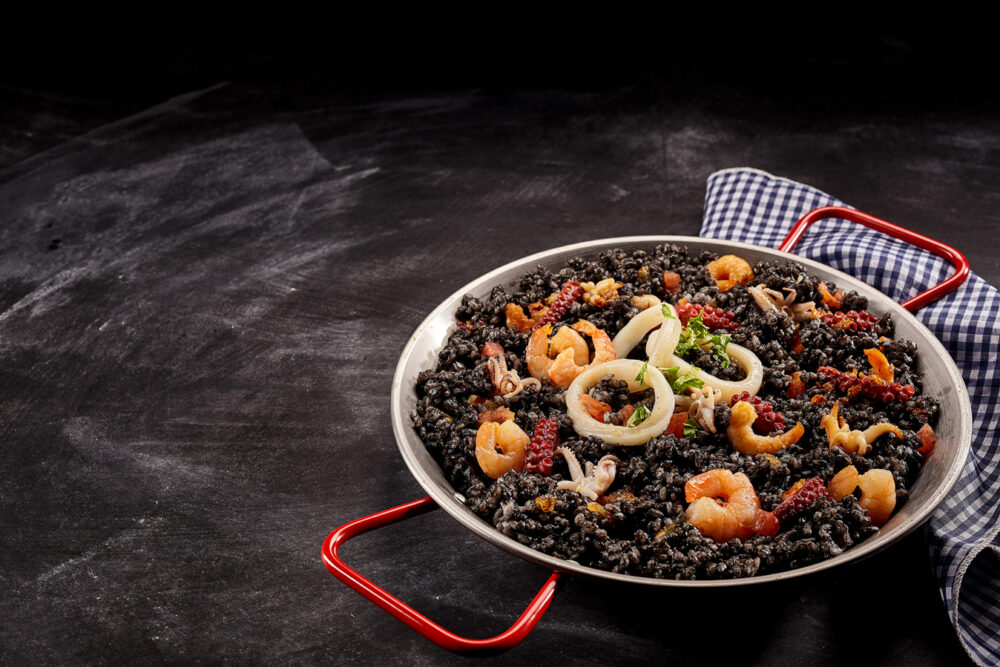
Arros negre is a Catalan dish very similar to paella. It is made from white rice seasoned with cuttlefish ink. Squid or, in fact, cuttlefish, garlic, onions, fish broth, paprika, and olive oil are added to it. Mussels, shrimp, and scallops can also be used as seafood. Arròs negre is often served with aioli sauce to balance out the sweet taste of the ink.
To try all the dishes described, you need to spend at least a week. For a quick introduction to Catalan cuisine, take a walking tour of Barcelona.
Also, everyone can go to the Boqueria market and take part in the preparation of a huge portion of paella, delicious tapas, and refreshing sangria. All this happens accompanied by a professional chef.
Read also: Catalan cuisine — the best traditional dishes and restaurants of the region
The level of development of gastronomy in the region is demonstrated by the number of restaurants with Michelin stars. Five establishments can boast three stars: El Celler de Can Roca in Girona, Lasarte, Disfrutar, ABaC, and Cocina Hermanos Torres in Barcelona. Six restaurants are awarded two stars: in Barcelona — Moments, Cinc Sentits, and Enoteca Paco Pérez, in the province of Girona — Les Cols (Olot), Miramar (Llança), Bo.TiC (Corsa). 43 restaurants have one star. Also, more than 170 establishments were mentioned in the guide.
What to bring from Catalonia: souvenirs and gifts
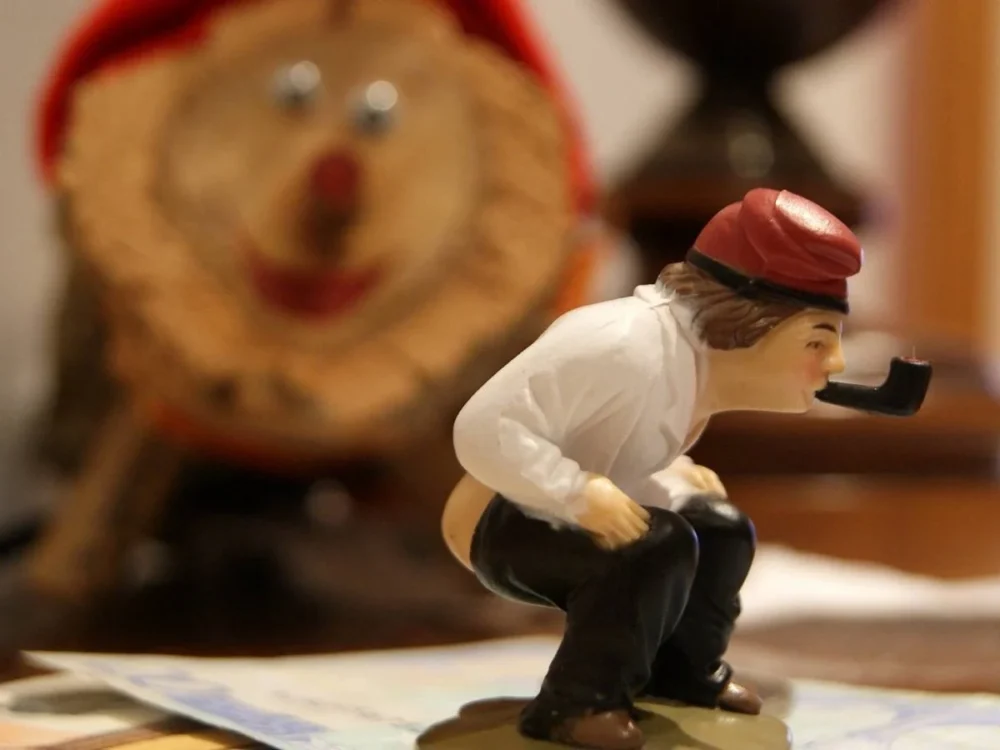
It is impossible to leave Catalonia without gifts. Children will be delighted by the sweets and Christmas logs, adults will appreciate the delicious sausages and alcohol, and collectors will love the ceramics. The region has souvenirs for every age, taste, and budget.
Wine and cava
There are more than 750 wineries in Catalonia. The largest wine-growing region of the autonomous community is Penedès. It stretches from the Pyrenees to the Mediterranean Sea, creating special conditions for growing grapes. Winemaking has been developed here since the 9th century. Among the productions, Familia Torres is most often singled out, where the fifth generation of the family is engaged in the craft. They produce white, red, and sparkling wines. The latter is worth talking about separately.
In Catalonia, namely in Penedes, a special variety of sparkling wine is made — cava. It is made from three types of grapes — Macabeo, Parellada, and Xarello. Cava can be white or pink with varying levels of sweetness. It is often eaten with traditional tapas.
You can go on a one-day tasting tour from Barcelona to Penedès.
Beer
The Estrella Damm brewery is located in Barcelona. This classic lager has been brewed here since 1876. During this time, it became one of the most popular beer brands in Europe. You can learn the secrets of its production and, of course, taste the intoxicating drink right at the factory.
Fuet sausage
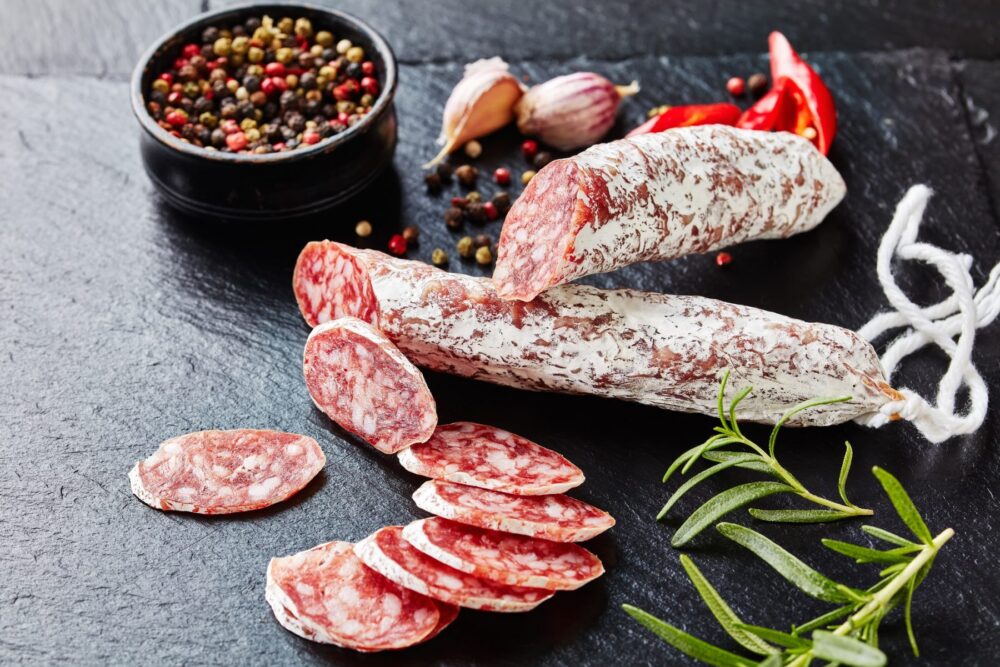
Fuet is a Catalan thin sausage. It is made from lean pork with salt and black pepper. This mixture is placed in the gut and dried for four weeks. During this time, it becomes covered with white mold, which gives this delicacy its characteristic taste and smell. You can buy it at any supermarket or market.
Carquiñoles cookies
Carquiñoles — dry cookies with almonds. In Spanish it is called carquiñoles, in Catalan, it is spelled carquinyolis or carquinyols. In appearance and taste it resembles Italian biscotti. The peculiarity of this dessert is that it is baked twice. First, a “log” is formed from sugar, flour, eggs, and whole almonds, then it is cut into pieces 1 centimeter wide and baked again until golden brown. Recipes may vary, but the double-baking process remains the same. This technique makes the cookies dry and crispy, with a long shelf life. Carquiñoles are sold in almost any grocery store.
Chocolate
Chocolate and Barcelona are directly connected. It was the Barcelonans who became the first Europeans to become acquainted with this American sweet en masse. In 1780, the first production facilities for the production of chocolate products appeared here. The pioneer was the Amatller company, which is still in operation today. Her sweets are easily recognizable by their vintage-design labels. In the center of Barcelona, several old shops have been selling chocolate for centuries. You can learn the history of this sweet, as well as take part in tastings and master classes at the Chocolate Museum (Museu de la Xocolata).
Cheese
Several types of cheese are produced in Catalonia that will delight gourmets.
The Tupí variety is made in the Pyrenees from cow’s or sheep’s milk. Its peculiarity is the fermentation process in a special ceramic vessel with the addition of alcohol. As a result of fermentation, it acquires a sharp, rich taste. It is usually consumed with bread and cava. Tupi is sometimes mixed with tomato sauce or honey to soften the taste. It is sold in glass jars.
Alt Urgell is a cheese made from the milk of Holstein-Friesian cows, ripening for at least 45 days. During this time, it acquires a sweet, buttery taste and a grassy-nutty aroma. It is consumed with white wines and cava.
Sauces
Catalonia is famous throughout the world for two sauces — garlic aioli and romesco based on tomatoes and sweet peppers. They will perfectly complement your usual dishes and allow you to prepare some Catalan gastronomic creations at home. It is best to buy such sauces not from factory-made ones, but from craft home producers. They are easiest to find in city markets.
Olive oil
Spain is the largest exporter of olive oil in the world. Therefore, leaving here without this purchase is a real crime. Catalonia is one of the main regions dedicated to this craft, so finding quality olive oil here is not difficult. Virgin oil is especially valued and is considered the most beneficial. It can be purchased at any supermarket, but one of the best places for such shopping is the Oli Sal store.
Merch of the football club Barcelona
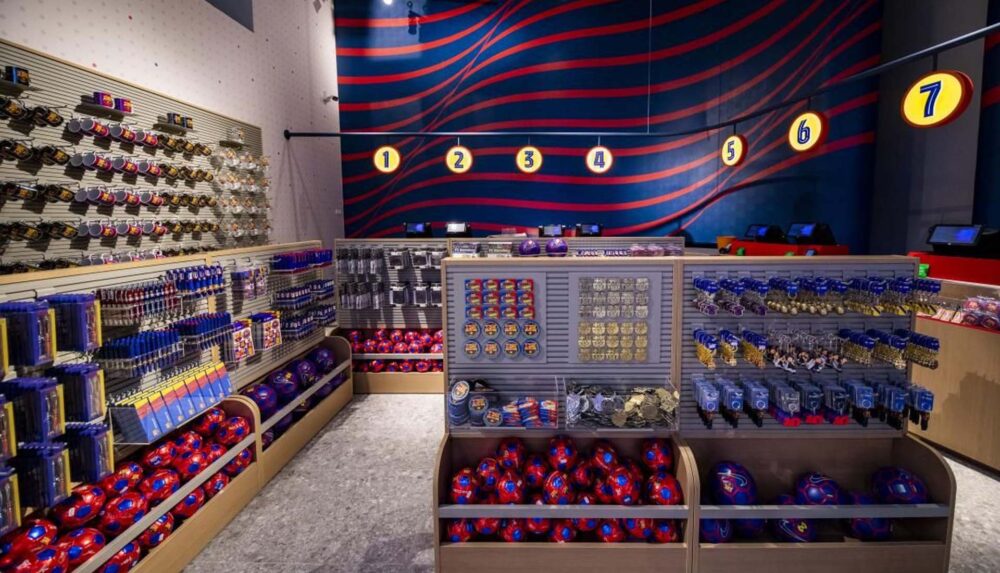
When talking about Barcelona, it is difficult to ignore this famous football club. Its paraphernalia will delight both children and adults. In the company store you can buy your favorite player’s uniform, accessories, tableware, baby products, board games, hats, Christmas sweaters, and even a piece of lawn from the Camp Nou stadium.
Ceramic products
Ceramics are one of the best gifts from Catalonia. First of all, these are dishes characterized by bright colors and traditional patterns. The most expensive copies are hand-painted. Motifs from Gaudí’s architecture are often found. Also, popular souvenirs are figurines of flamenco dancers in colorful dresses. In large cities, there is an abundance of shops specializing in such products. There are especially many of them in the center of Barcelona.
Caganer figurine
Caganer is a ceramic figurine dedicated to Christmas. However, this is not a depiction of the Virgin Mary, Christ, or the Magi. Initially, the figurine of a peasant in a barretina hat, relieving himself in great need, was hidden in a traditional nativity scene. It is believed that such a figurine symbolizes the fertility of the earth, thanks to natural “fertilizer”. Now kaganers are made in the form of politicians, football players, musicians, actors, pop culture characters, and even the Pope.
Gaudi lizard
Antoni Gaudi’s mosaic ceramic lizards will become a small piece of Barcelona in your home. They are made in the likeness of the famous mosaic dragon from Park Guell. The figurines differ in size and quality of work performed.
Porron jug
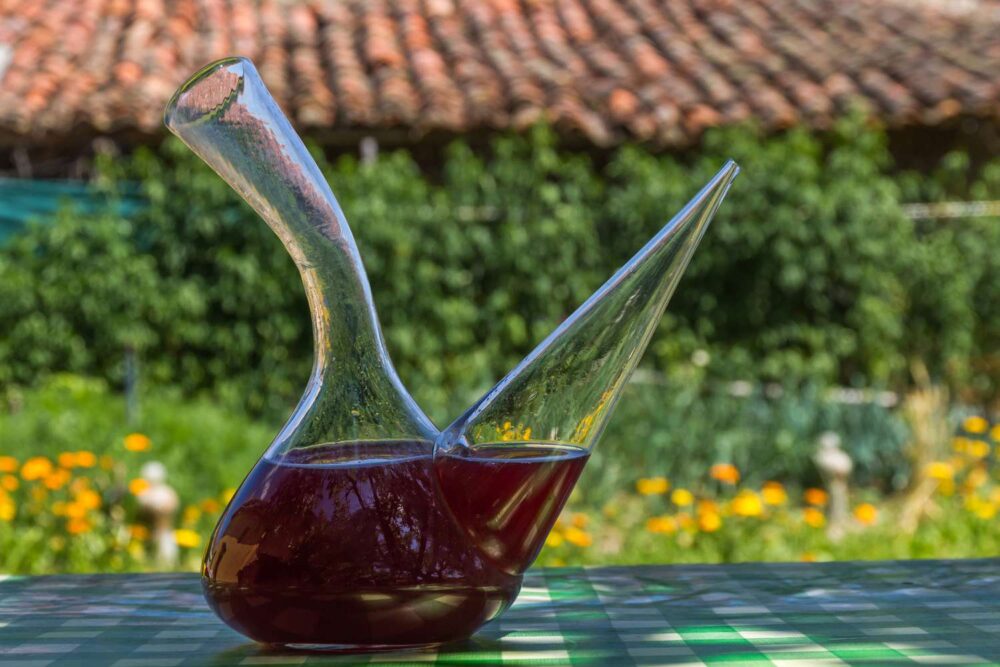
Porrón (Porró) is a specially shaped glass wine jug. It differs from the usual decanter by the presence of a long spout — wide at the base and narrow at the end. Another feature of this vessel is that the wine is not poured into glasses, but rather drunk directly from it. This process requires some dexterity. The porron is raised above the head and a thin stream is directed directly into the mouth, without touching the spout with the lips. This is entertainment for the company, while not violating hygiene standards, which have become especially strict during Covid. Porrón is sometimes used to store olive oil and vinegar.
Caga Tio
Caga Tio is another attribute of Catalan Christmas. This is a log on legs with a cheerful face, dressed in a red hat, which appears in the house on December 8 — the feast of the Immaculate Conception of the Virgin Mary. For three weeks until December 25, he must be looked after by children, covered with a warm blanket, and fed. On Christmas Eve, Kaga Tio is caned while singing a special song, causing him to “defecate” gifts.
Barretina cap
Barretina is a traditional men’s Catalan hat, typical of the countryside. It is made of wool, is red, and decorated with a wide black border. You could often see Salvador Dali in it. Nowadays this headdress is mainly worn by participants in events organized in honor of national holidays. In everyday life, barretina is rarely seen on men.
Espadrilles
Espadrilles (esparteñas, espardenyes) are traditional Catalan shoes. Its name refers to the esparto plant from which the sole was made. Initially, these inexpensive and lightweight shoes were worn by peasants, priests, and soldiers. The world learned about this model in the 1940s, when actresses Rita Hayworth and Lauren Bacall appeared on screen wearing them. Three decades later, Yves Saint Laurent created his version on a wedge. Perhaps one of the best and oldest manufacturers of these shoes is La Manual Alpargatera. Their flagship store is located near the Picasso Museum in Barcelona.
Best time to visit Catalonia
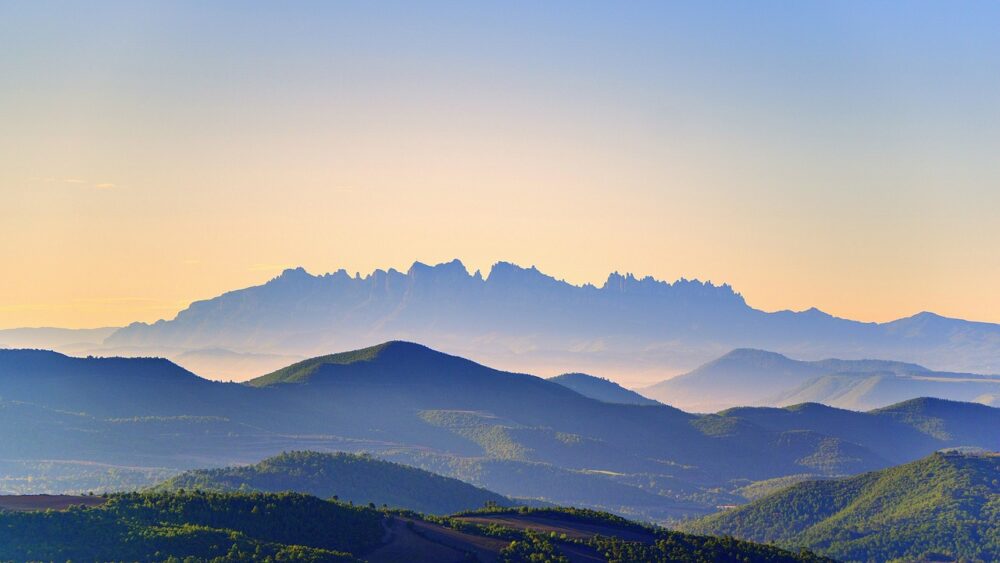
The climate in Catalonia is predominantly Mediterranean. In coastal areas, summers are hot and winters are mild. In the Central Catalan Basin, winters are cold and summers can be very hot. The Pyrenees experience snowy weather in winter and fairly mild summer weather.
The warmest month is July with an average temperature from +21 oC to +30 oC, depending on the area. The coldest month is January. Its average temperature can range from +4 oC to +15 oC . Catalonia receives an average of 640 mm of precipitation per year — most of the rain occurs in the mountains.
The Mediterranean Sea can be enjoyed from June to October when the average temperature is +23 oC.
Where to stay in Catalonia
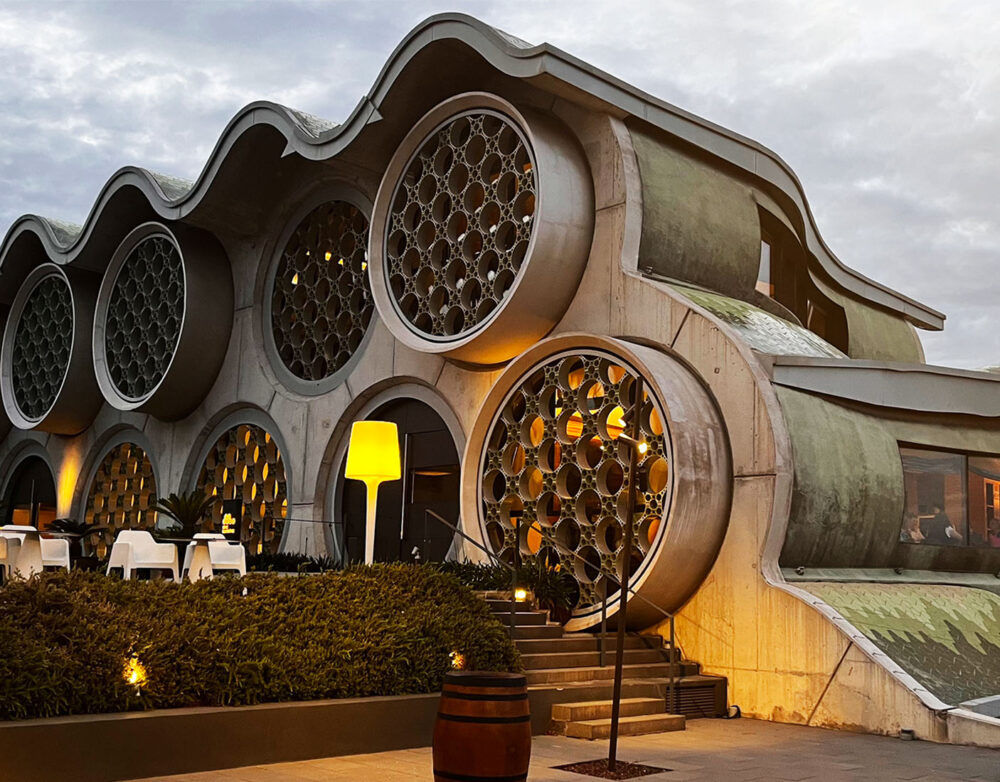
Catalonia provides its guests with a wide selection of hotels, ranging from the simplest to luxury accommodation options. Anyone can rent a room on the territory of a working winery or in an ancient castle.
Hotel Arts Barcelona
Hotel Arts Barcelona is one of the best hotels in Western Europe, located on the shores of the Mediterranean Sea in a 44-story building. It consists of more than 480 luxurious rooms offering city and sea views. The Hotel Arts Barcelona has a casino, spa, and several restaurants, including Enoteca Paco Pérez, awarded two Michelin stars. Worth mentioning is the green area at the hotel with the giant golden sculpture El Peix by Frank Gehry, the author of the famous Dancing House in Prague.
Ohla Barcelona
Ohla Barcelona is a five-star hotel located in the building of Barcelona’s first department store. Its facade is decorated with large pins with ceramic eyes, making it as memorable as possible. Inside, visitors are also greeted by impressive works of contemporary art. All 74 rooms are designed in black and white colors with bright accents. A special feature of Ohla Barcelona is that the guest can make their stay as comfortable as possible by choosing the scents of the bed linen and the softness of the pillows, ordering a bubble bath for the evening, and using the services of a personal buyer. Ohla Barcelona has four dining establishments led by chef Romain Fornell, including the Michelin-starred Caelis restaurant. Guests can also enjoy views of Barcelona from the outdoor rooftop terrace. In the warm season, you can swim here in the pool with transparent walls.
Mandarin Oriental Barcelona
Mandarin Oriental Barcelona is one of the most popular five-star hotels in Barcelona. It is located on Passeig de Gràcia, surrounded by masterpieces of Gaudi architecture. All rooms have a designer interior, and you can restore your strength in the spa center. The kitchen is in charge of one of the most awarded female chefs in the world, who has seven Michelin stars and is a popularizer of Catalan cuisine — Carme Ruscalleda. You can try her masterpieces at the Moments restaurant with two Michelin stars. Mandarin Oriental Barcelona also has a bar, an outdoor rooftop terrace with a swimming pool, and another restaurant, Blanc.
Cava & Hotel Mastinell
Cava & Hotel Mastinell is a hotel in Vilafranca del Penedès, which is located in the wine region of Catalonia – Penedès. It is located on the territory of an active winery, awarded with awards from all over the world. In 2013, a hotel opened here, the facade of which is designed in the form of two rows of giant cava bottles under a wavy roof, referencing the works of Gaudí. Everything is built from environmentally friendly materials with minimal impact on the environment. On the ground floor is the En Rima restaurant, where they cook with ingredients grown locally or purchased from nearby markets. Guests can enjoy vineyard tours, cellar visits, and, of course, tastings.
Hotel Peralada Wine Spa & Golf
Hotel Peralada Wine Spa & Golf is located in the municipality of the same name in the historical region of Empordà, near Girona. It consists of 64 rooms with an elegant design, dominated by natural materials. The hotel has an outdoor swimming pool, a gym, a golf course, a lounge, offices, a fashion boutique, and a wine store. Two bars and two restaurants are responsible for the gastronomic part, including Castell Peralada Restaurant with one Michelin star under the leadership of Javi Martinez, and L’Olivera Restaurant under the patronage of star chef Paco Perez. You can restore your strength in a unique wine spa. You can continue your wine experience at the new Perelada winery, which opened a few years ago and has a special modern look, for which the RCR Architects bureau is responsible.
Parador de Cardona
Parador de Cardona is one of the representatives of unique Spanish hotels. The Parador is a state-owned hotel located in a restored historical building. It could be a castle, monastery, palace, town hall, fortress, etc. This system allows you to preserve the historical heritage, as well as introduce guests to Spanish culture and traditions. At the same time, prices for accommodation in such places are very reasonable and do not amount to several thousand euros. Parador de Cardona is located in the city of Cardona in a medieval castle from the 9th century with real moats and towers. The hilltop location allows for incredible views, including Mount Montserrat. The rooms are equipped with everything necessary for a comfortable stay. The restaurant of this parador is located in the old refectory, which adds a special atmosphere. You can also enjoy delicious food on the outdoor terrace.
Parador de Lleida
Parador de Lleida is located in the center of Lleida. It is a former monastery of the 17th century. Unlike Parador de Cardona, the rooms here do not have the flair of ancient bedrooms but look very modern. This trend of combining antiquity and fashionable stylistic solutions is clearly expressed in the design of the courtyard, which is a feature of this parador. In the corners, there are four low tables where visitors can relax. Restaurant L’Aplec is located in a former church. It is headed by Paco Vidal, who introduces visitors in a sophisticated way to Catalan cuisine, including Lleida specialties such as cargols a la llauna.
Parador de Vielha
Parador de Vielha is a hotel located in the Val d’Aran region in the municipality of Vielha. This is a great place for a lazy holiday in the Catalan Pyrenees. There are outdoor and indoor swimming pools, a spa, a jacuzzi, a sauna, a gym, and a sunbathing terrace. At the same time, you can enjoy water treatments in the fresh mountain air even in winter, thanks to the heating system. The hotel restaurant is located in a hall with panoramic windows. The menu features Aran cuisine, typical of the region.
How to get to Catalonia
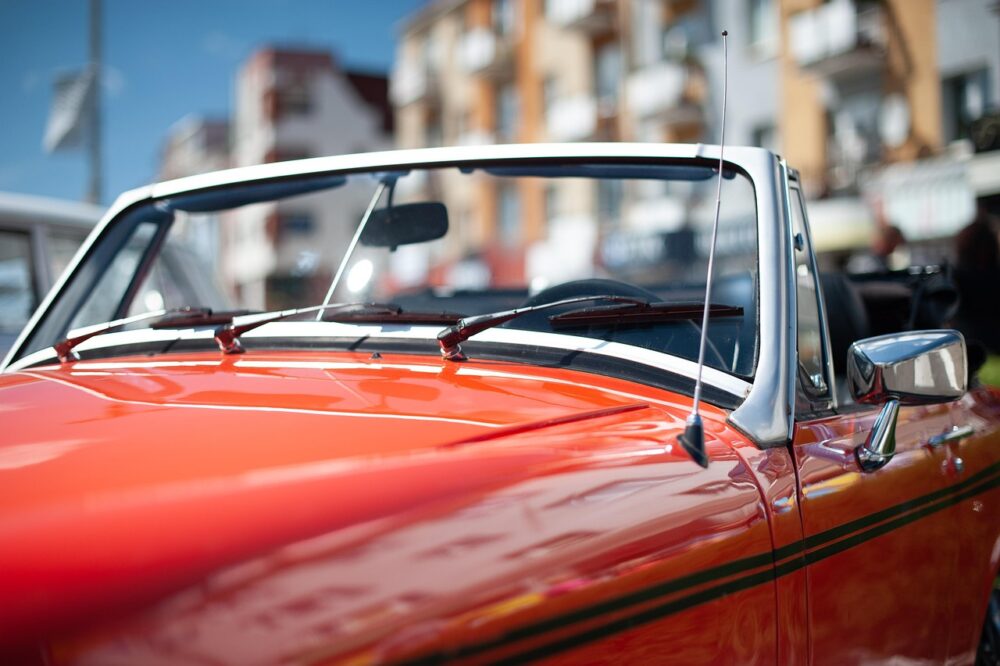
Catalonia is a very convenient region for travel. This is once again proven by local transport. There are two international airports and a developed railway network. Motorists will be able to travel along highways without unnecessary worries.
Airports of Catalonia
The region’s largest airport is located in its capital. It is called Josep Tarradellas Barcelona–El Prat Airport (Aeroport Josep Tarradellas Barcelona-el Prat, Aeropuerto Josep Tarradellas Barcelona-El Prat, BCN). Every year it serves more than 40 million passengers from all parts of the world.
Also in Catalonia, there is an international airport, Girona-Costa Brava (Aeroport de Girona-Costa Brava, Aeropuerto de Gerona-Costa Brava, GRO). It is much smaller and only accepts flights from European countries.
Reus Airport (Aeroport de Reus, Aeropuerto de Reus, REU) in Tarragona receives seasonal and charter flights from Europe.
The remaining airports either specialize in charter and private flights or are involved in pilot training and commercial activities. These are the airports of Lleida-Alguaire (Aeroport de Lleida-Alguaire, Aeropuerto de Lérida-Alguaire, ILD), Andorra-Seu d’Urgell (Aeroport Andorra–La Seu d’Urgell, Aeropuerto Andorra–La Seu d’Urgell, LEU) and Sabadell (Aeroport de Sabadell, Aeropuerto de Sabadell, QSA).
Railway stations of Catalonia
As with the airport, Catalonia’s largest train station is located in its capital. It is called Barcelona-Sants (Estació de Barcelona-Sants, Estación de Barcelona-Sans) and is the end point of the high-speed railways running from Madrid and Perpignan (France). It serves commuter, regional, and long-haul destinations.
Motorways of Catalonia
- Autovía A-2 — connects Madrid and Barcelona.
- Autopista AP-2 — goes from Zaragoza to Malaga
- Autovía A-7 — runs along the entire Mediterranean coast from Algeciras to La Junquera.
- Autopista AP-7 — repeats the A-7 except for the interruption of the route between the cities of Vera and Malaga. This is a partial toll highway.
- Autovía A-22 — connects the cities of Huesca and Lleida.
- Autovía A-26 — goes from Besalu to Olot.
- Autovía A-27 — connects Tarragona and Lleida.
The best way to explore Catalonia is by car. This will allow you to choose a convenient rhythm of travel and not depend on public transport or an excursion group.
Tips for tourists in Catalonia
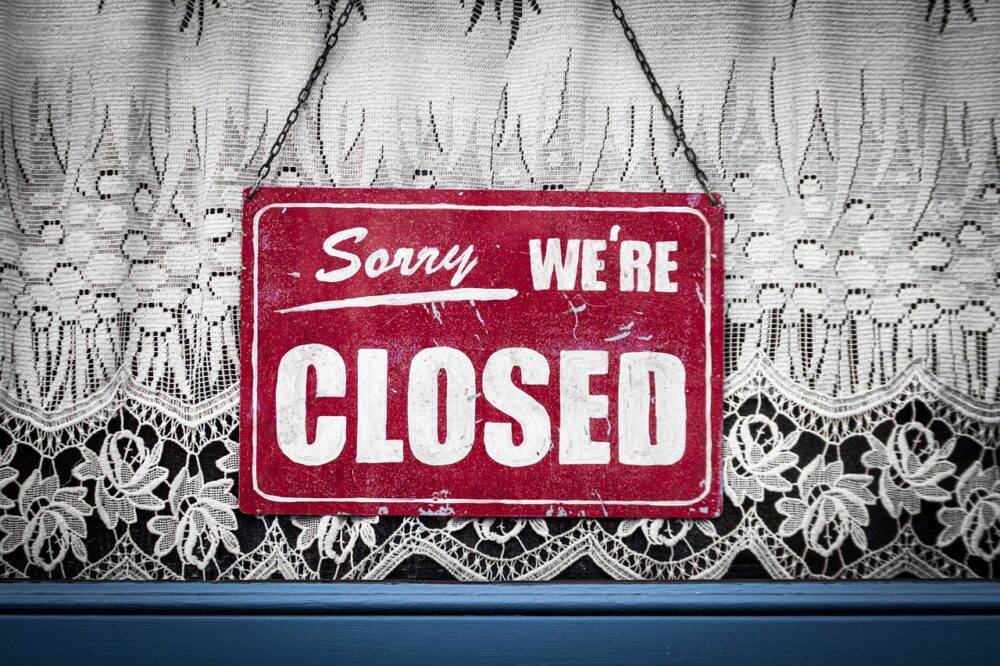
- Catalonia is the most tourist region in Spain. When visiting the main attractions, especially in Barcelona, you need to be prepared for large crowds and ever-present queues. In order not to stand for several hours for tickets, it is better to purchase them in advance. This can be done without any problems on the Internet.
- Catalonia is home to a huge number of stunning places. You need to immediately understand that it is physically impossible to examine them during a week-long trip. It is better to choose locations that interest you personally and study them well than to choose a marathon format — 10 attractions in one day.
- The autonomous community has its own Catalan language. Some words are similar to Spanish, while others are completely different. It’s worth being prepared for this. Remember the basic phrases that you can use when communicating with locals — Si us plau (please), Bon dia (good morning), Ho sento (sorry), Gracies (thank you), Adéu (goodbye).
- Not all places in Catalonia allow you to pay by card, so you should always have some cash with you. This is especially true for small villages.
- Sunday is a full day off. On this day it is difficult to find a working store or even a supermarket. Therefore, there is no need to plan shopping for the end of the weekend.
- If you are going to go to the mountains, you should take care of special hiking shoes. In sneakers or sandals, it will be extremely difficult to overcome certain sections of the path.
- Catalans are accustomed to late dinners. At 19:00 only tourists can be seen in the restaurant. Locals start their meal at approximately 21:00. A common practice is for bars and restaurants to open for dinner at 20:00.
- In tourist places you need to carefully look after your belongings. Such locations are very popular with pickpockets and scammers who prey on gullible visitors. Don’t get distracted by talking to strangers and don’t keep your phone and wallet in your pockets.
Frequently asked questions about Catalonia
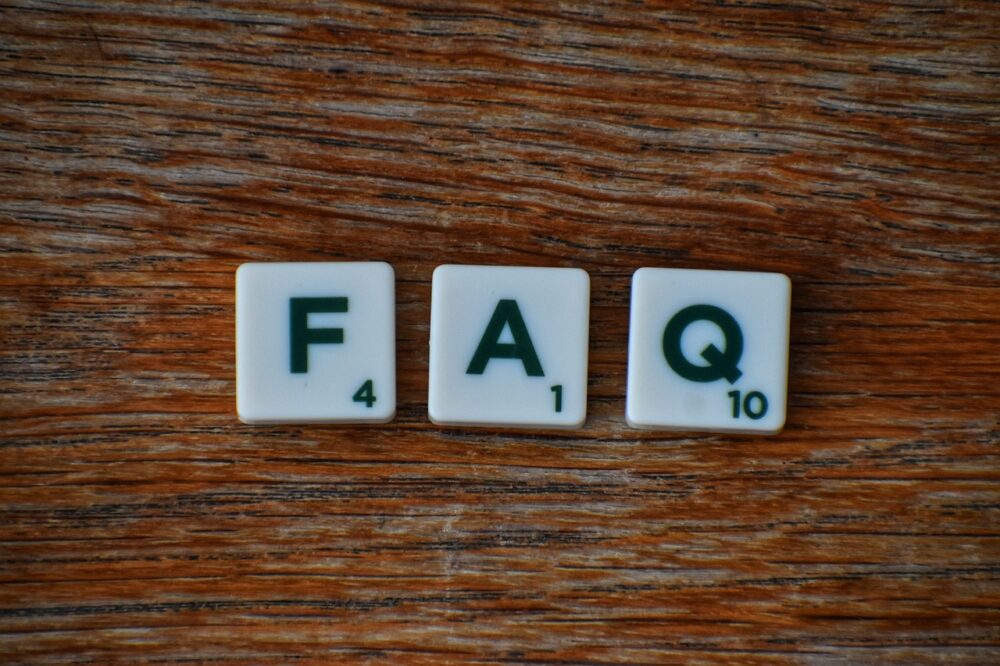
Is Catalonia part of Spain?
Yes, Catalonia is an autonomous community within Spain.
How is Catalonia different from Spain?
Catalonia is one of three Spanish regions with its own language, different from the national one.
Why is Catalonia popular?
Catalonia is famous for its heritage, traditions, and language. Several prominent representatives of fine arts, music, architecture, and sports were born here.
Why is Catalonia rich?
Catalonia is one of the most developed industrial centers in Europe. Its industry contributes about a quarter of Spain’s GDP.
Is Catalonia safe?
Yes, Catalonia is a safe region for tourism.
How big is Catalonia?
The area of Catalonia is 32,091 square kilometers.
Is it possible to communicate in Spanish in Catalonia?
Yes, the majority of the region’s population is bilingual and speaks Spanish and Catalan equally well.
Catalonia on the map
Add our article to your bookmarks: it has a lot of useful information.
If you liked this post, subscribe to our newsletter and Telegram.
Also join us on Pinterest to keep up to date with the latest news.
